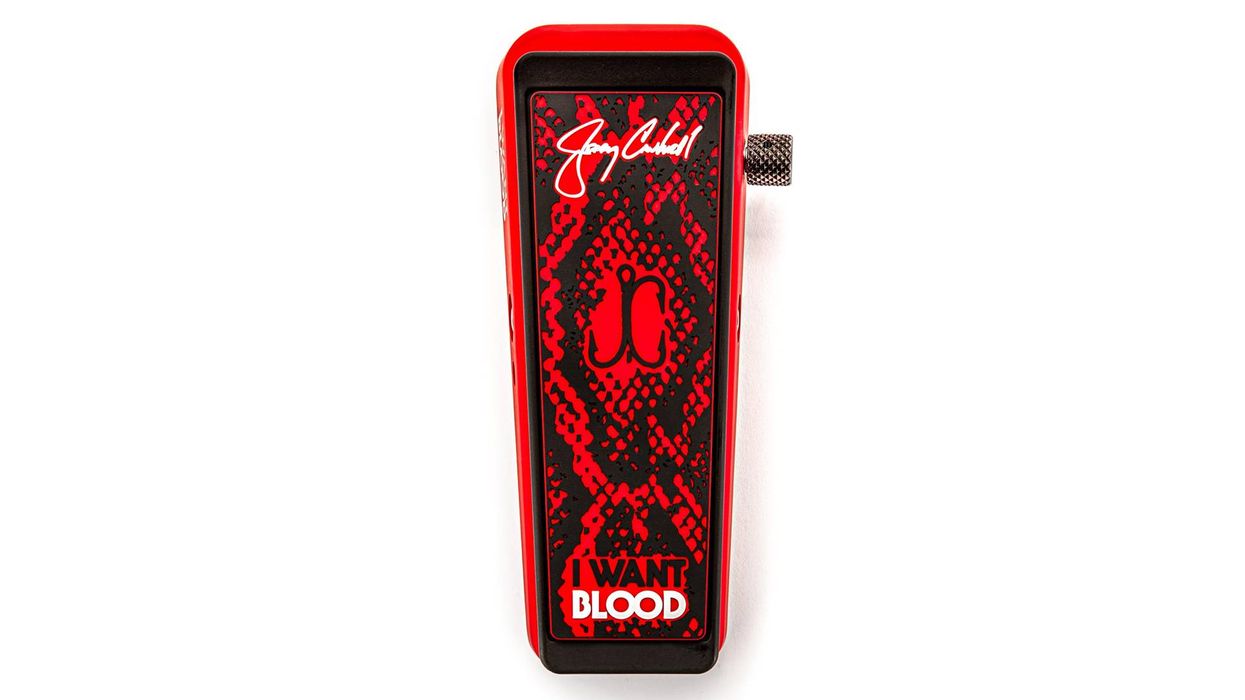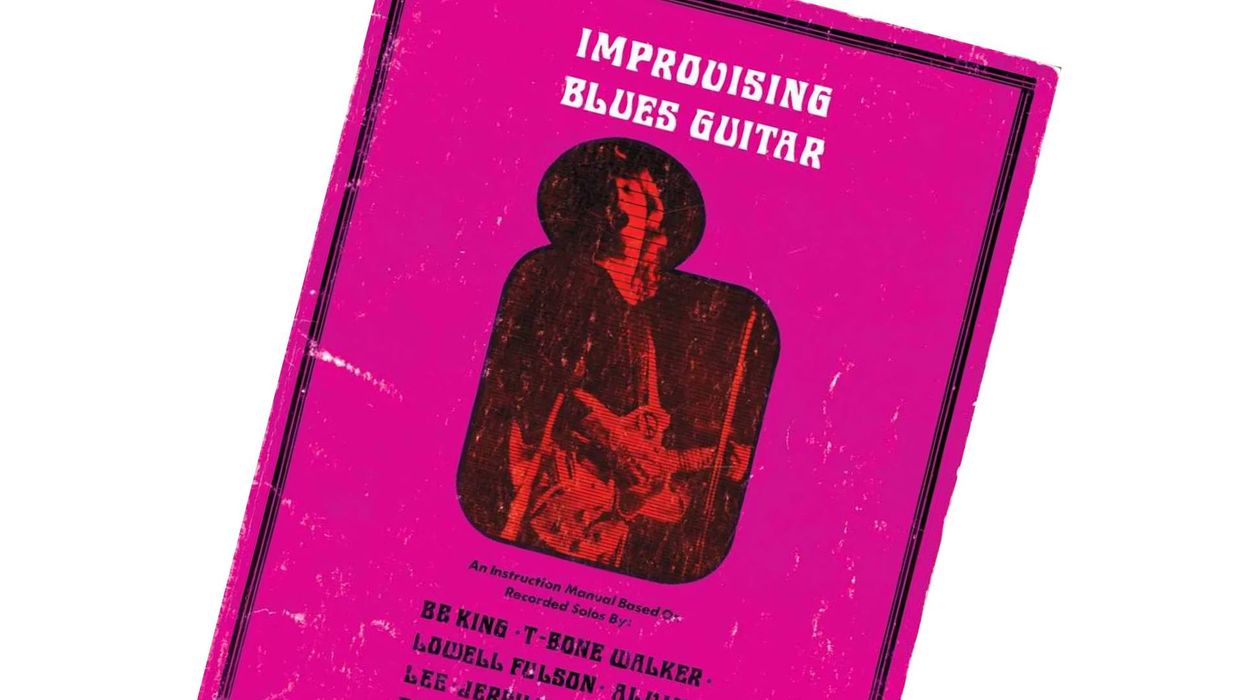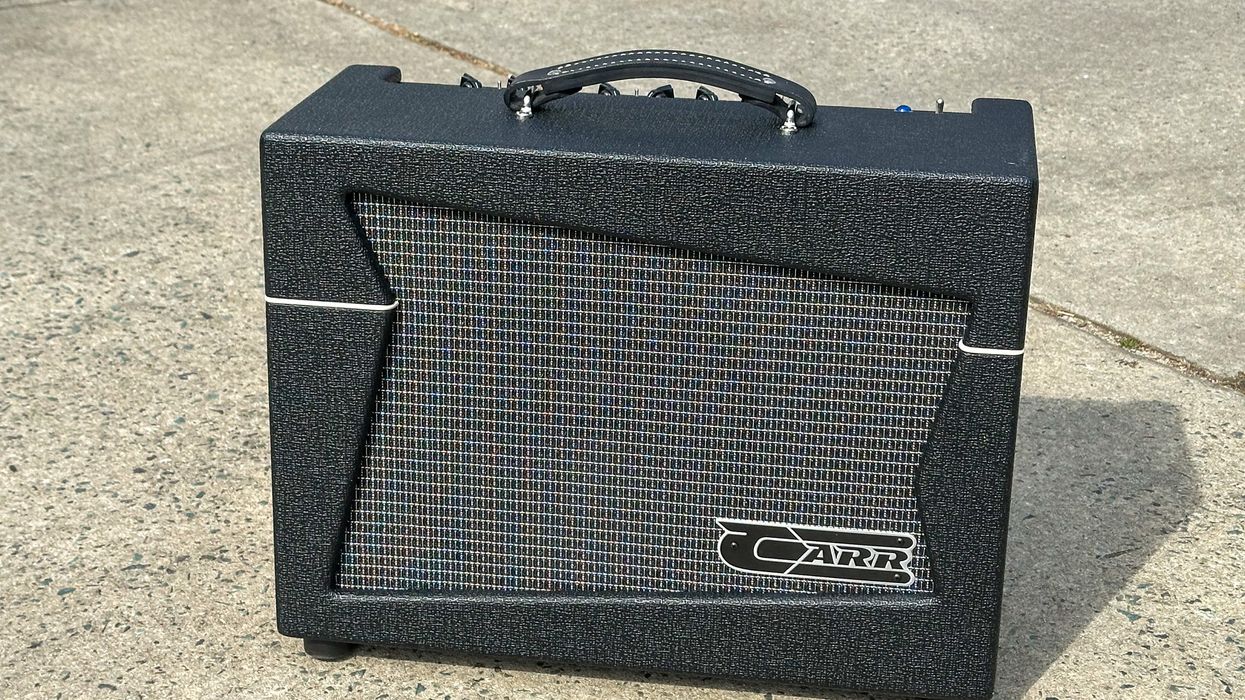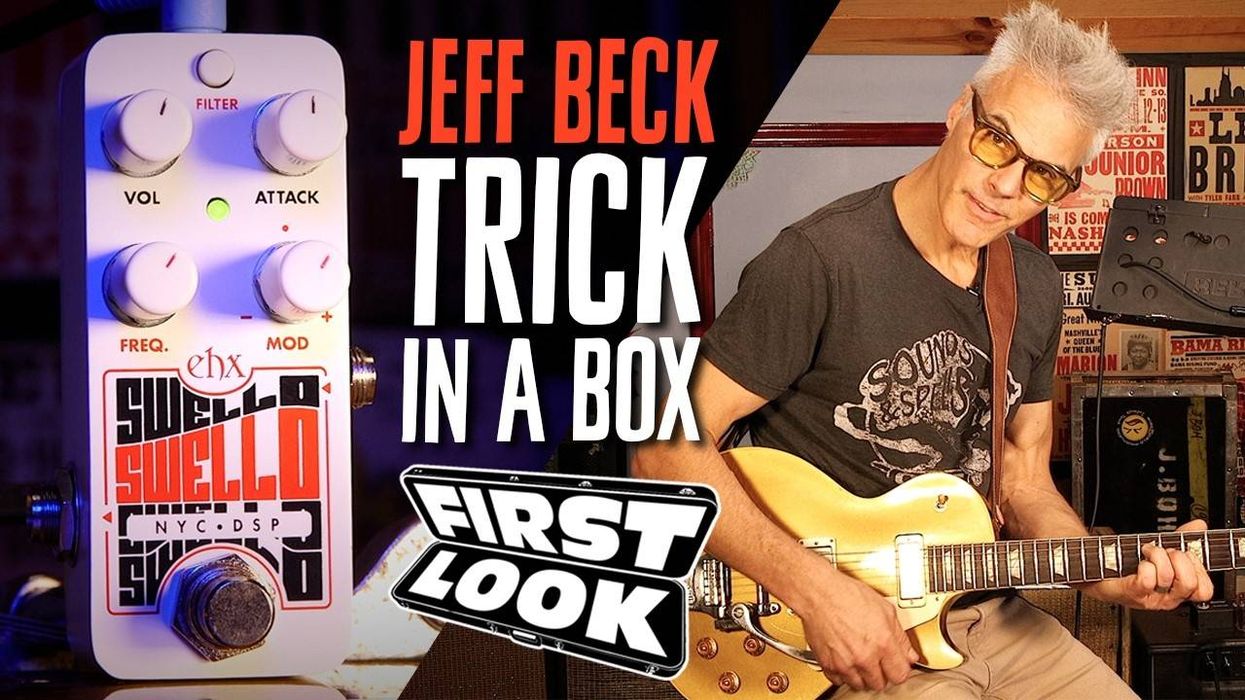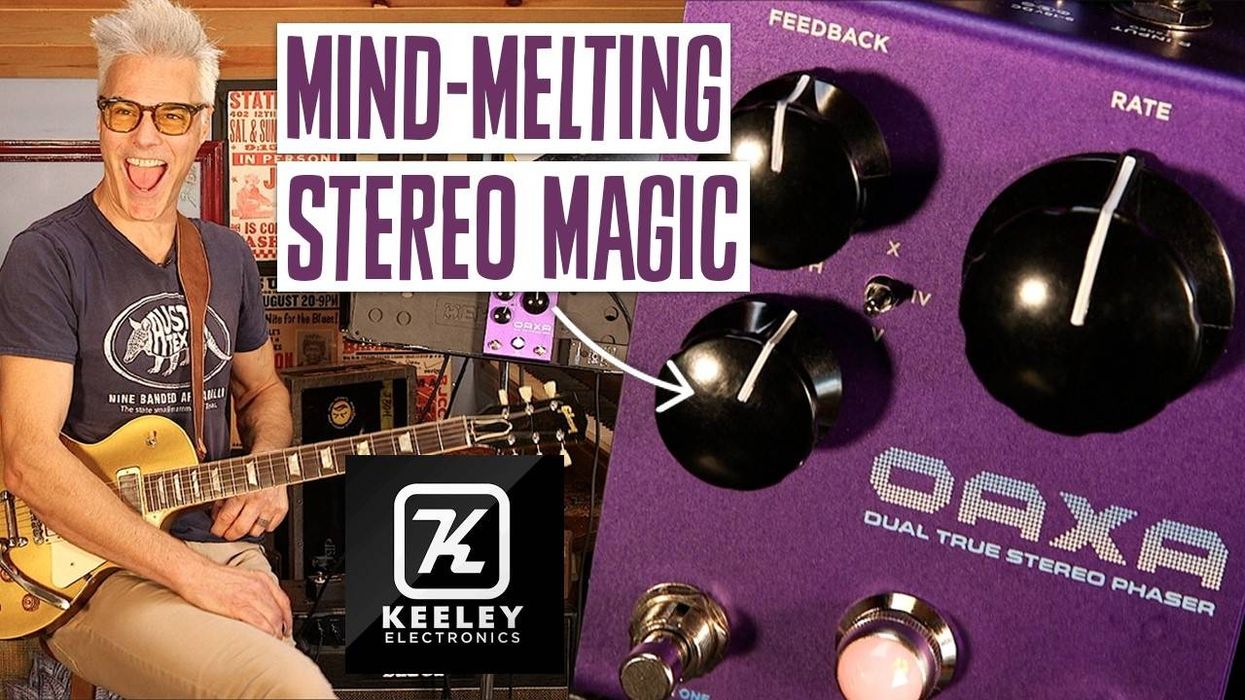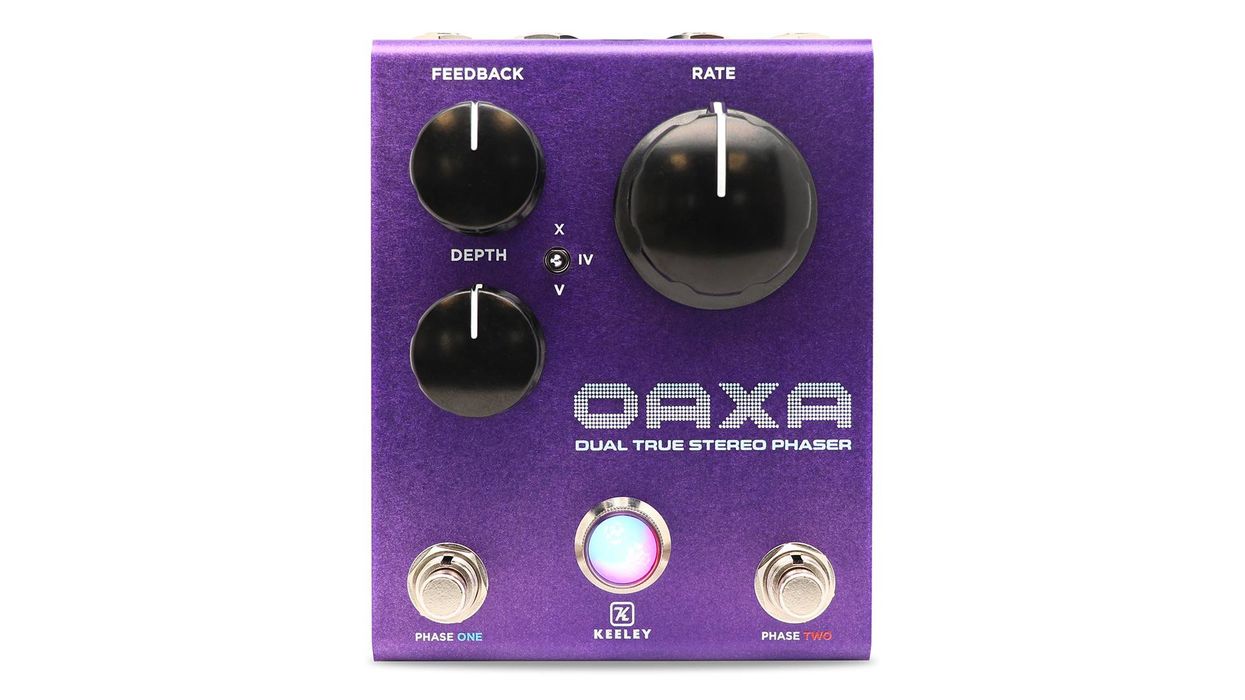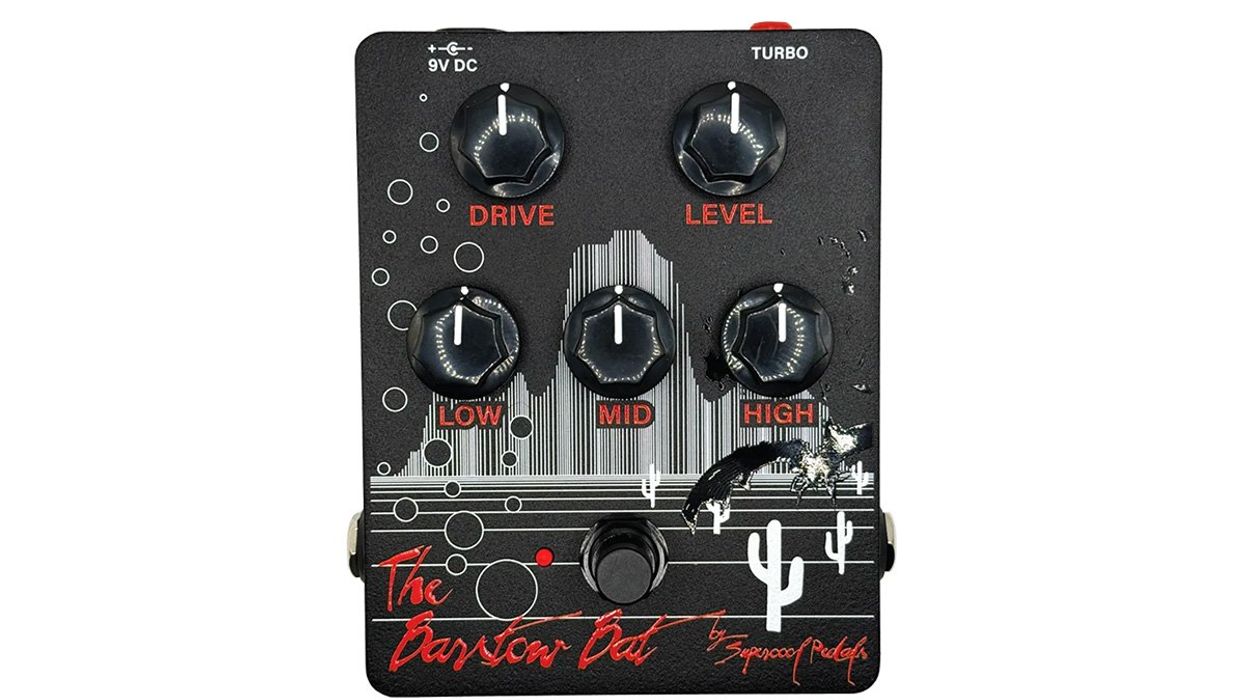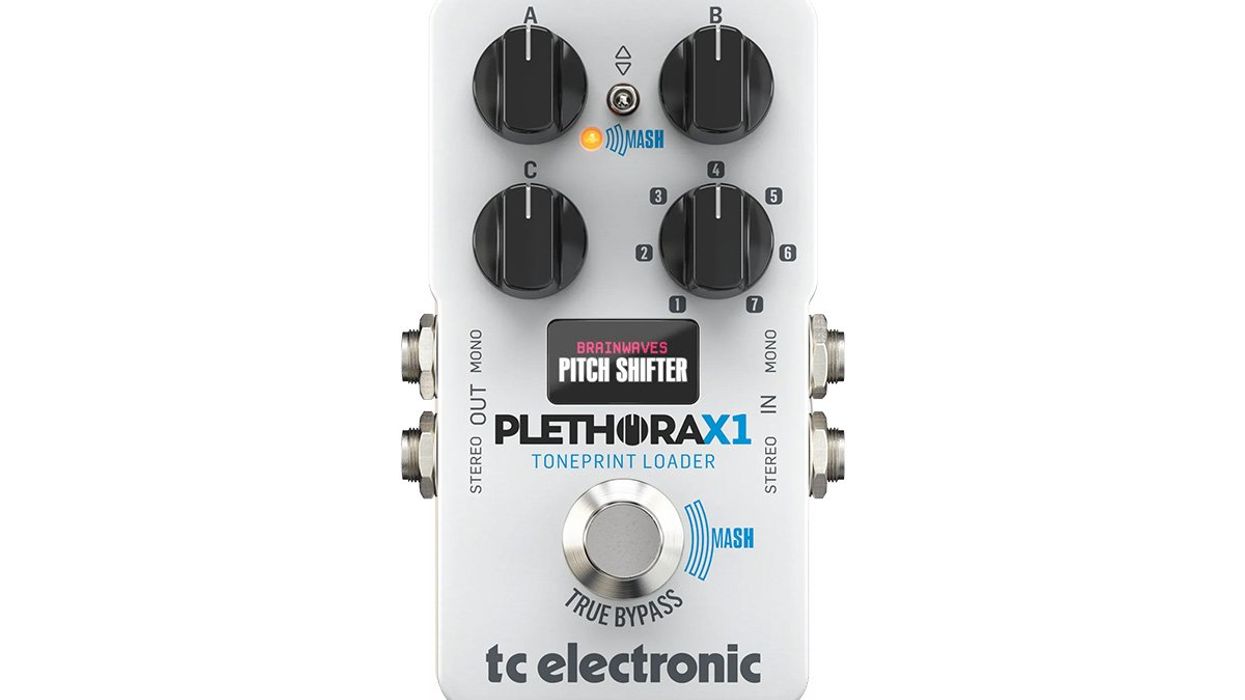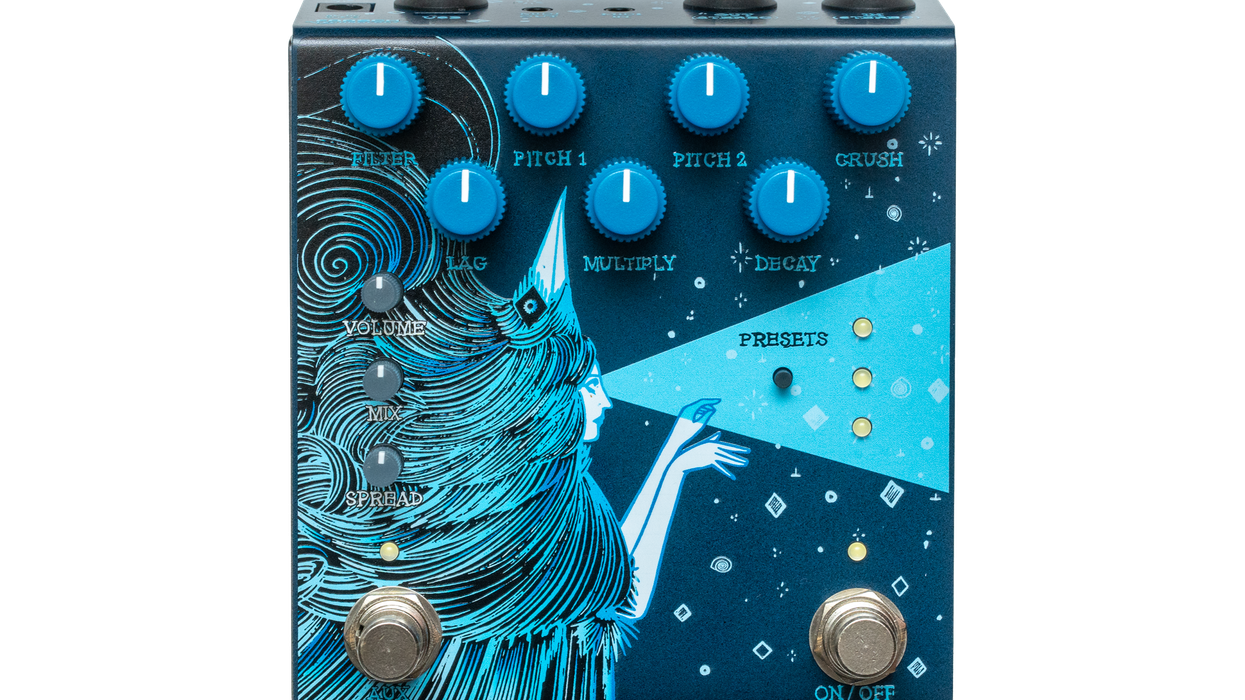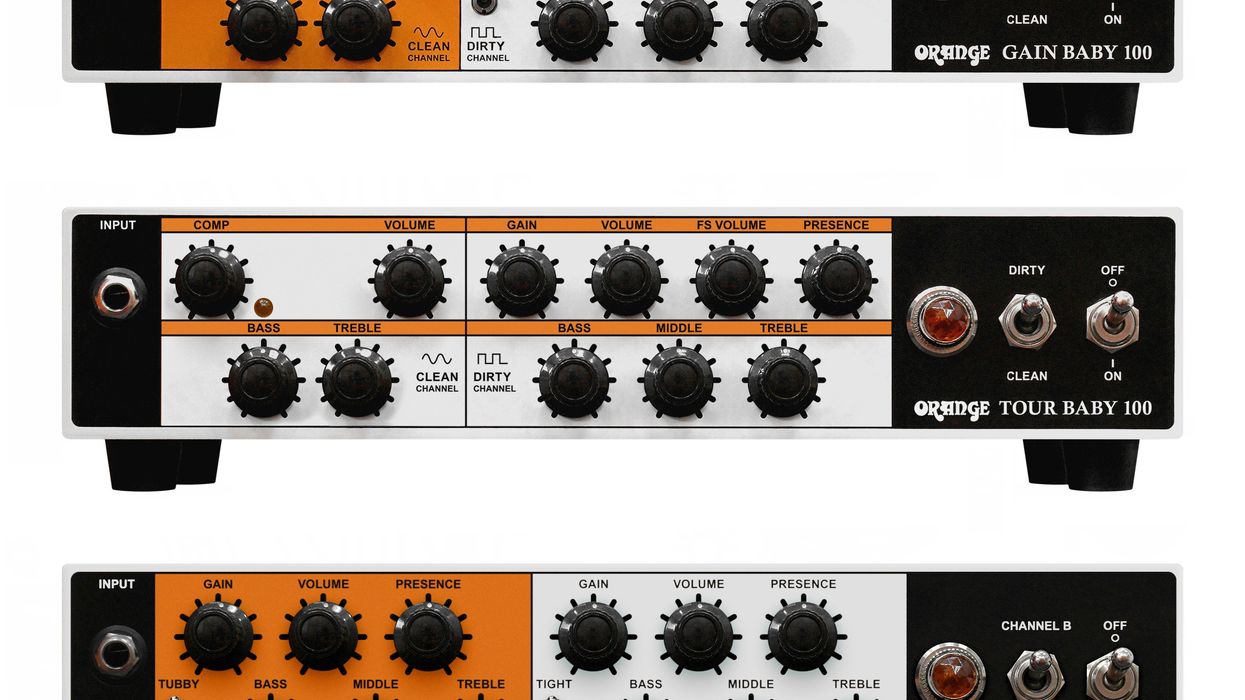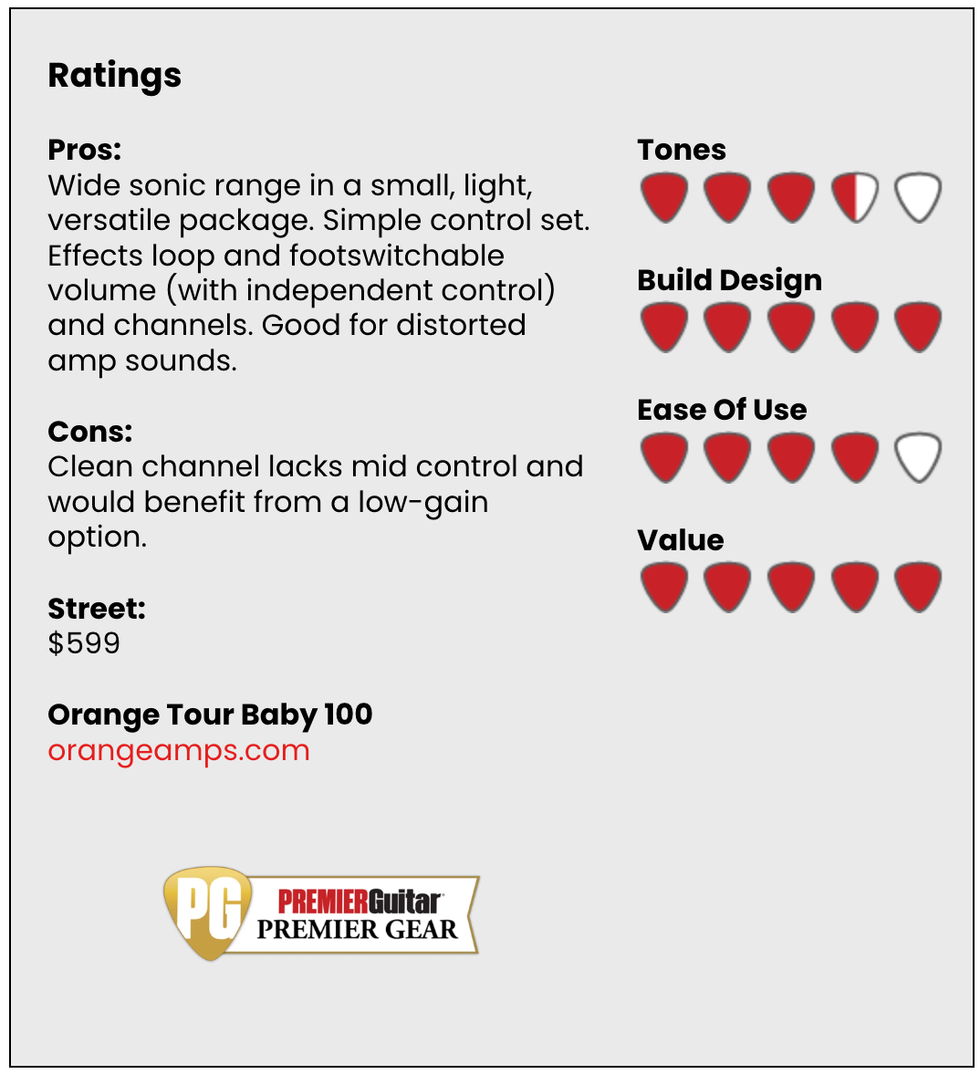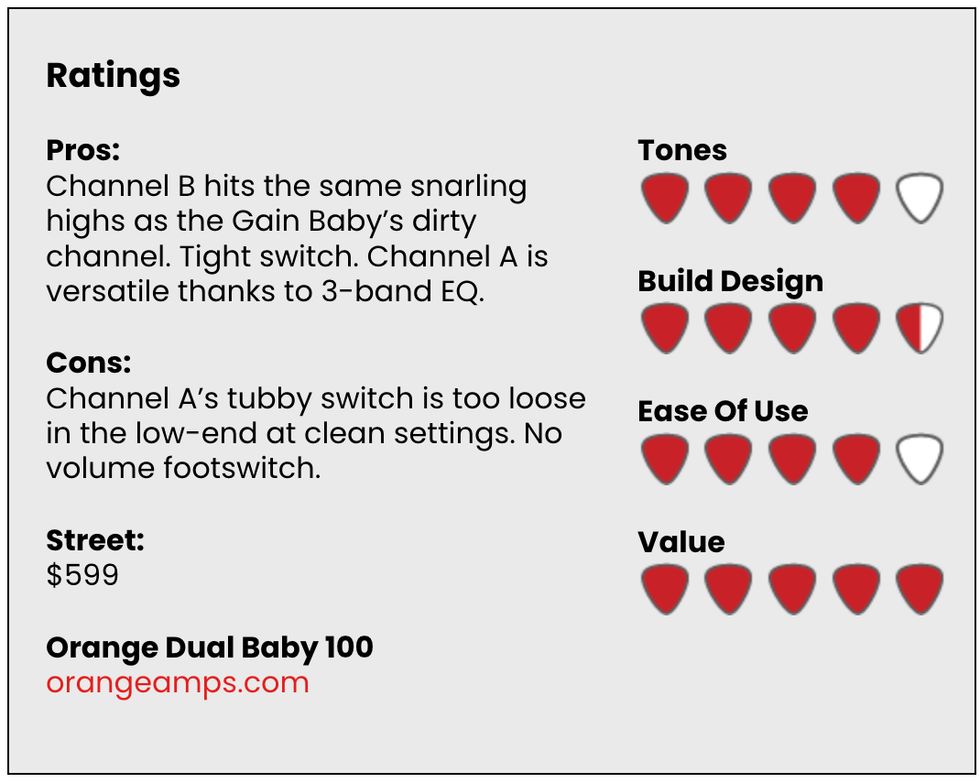Fulltone 2B JFET Booster
Much of what makes Fulltone’s Full Drive 2 and 3 such hits is their forgiving simplicity: They make dialing up great overdrive and boost tones a breeze. The 2B takes that simplicity a step further, extracting the boost section from the Full Drive 3 and stuffing it into a sturdy, ultra-compact pedal that packs a wallop and serves as a tone masseuse extraordinaire.
$103 street, fulltone.com
Click here to read the full review
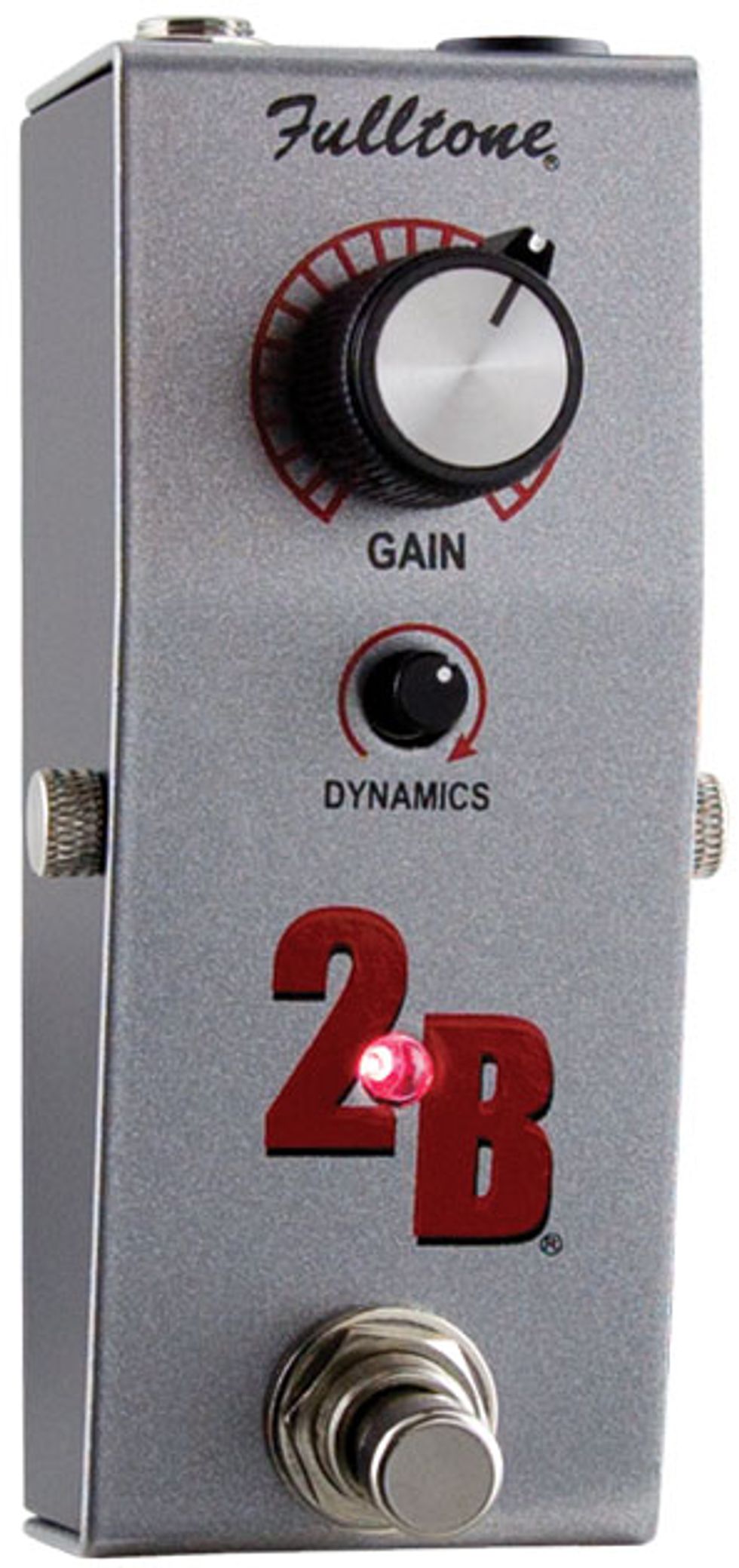
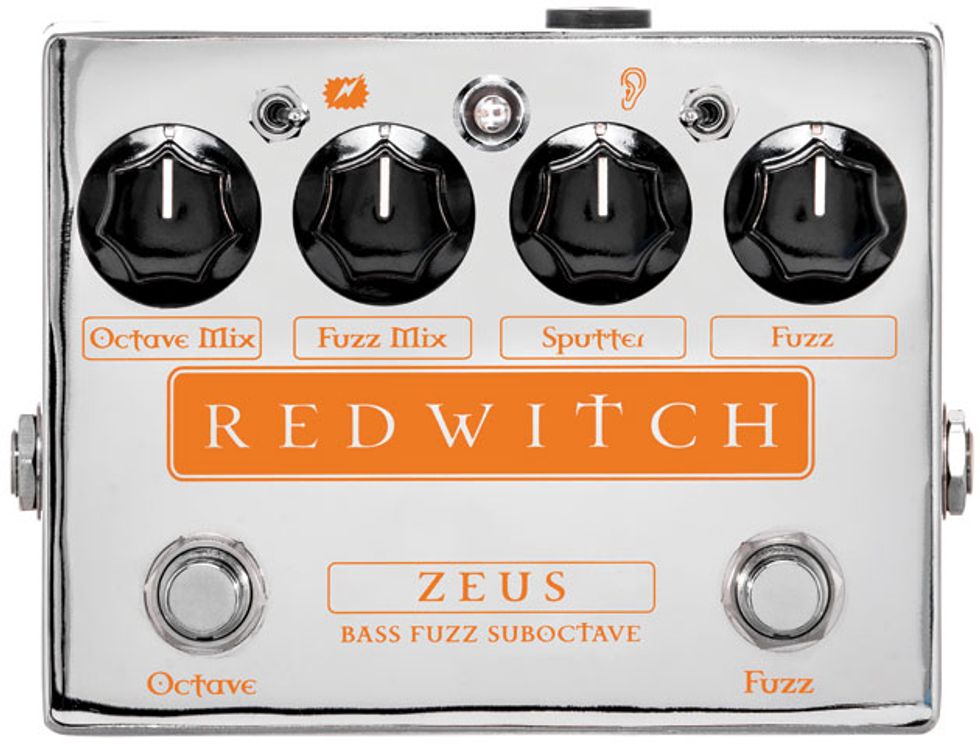
Red Witch Zeus
The chrome-clad Red Witch Zeus took a Premier Gear Award this year thanks to its split personality—part analog sub-octave, part silicone fuzz. The two completely stand-alone effects are impressive as solo beings, but run both simultaneously and you’ll summon thunderous sonic mayhem.
$299 street, redwitchpedals.com
Click here to read the full review

Jackson SLATXMGQ 3-6 Soloist
Stable, sonically potent, and ready to slay, this imported X-series Soloist impressed reviewer Joe Charupakorn with it’s buttery action, tuning-stable vibrato, and surprising versatility. These qualities make this metal-on-the-surface axe equally suited for blues, rock, and pop applications.
$699 street, jacksonguitars.com
Click here to read the full review
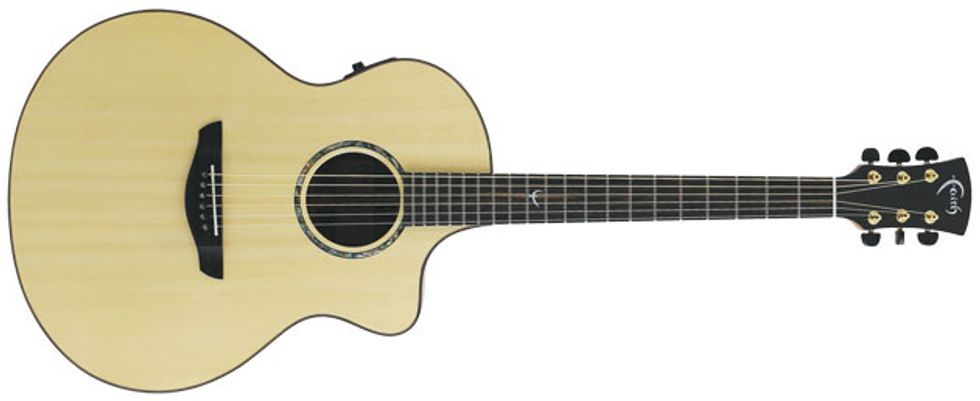
Faith FNCETB Neptune
The Neptune managed the ever-so-satisfying trick of sounding and feeling very expensive at a three-figure price. Using Indonesian trembesi wood for the back and sides, along with an Engelmann spruce top adds up to a simultaneously bright and bass-rich voice. And with versatile Shadow electronics, it’s a great stage-ready performer too.
$999 street, faithguitars.com
Click here to read the full review
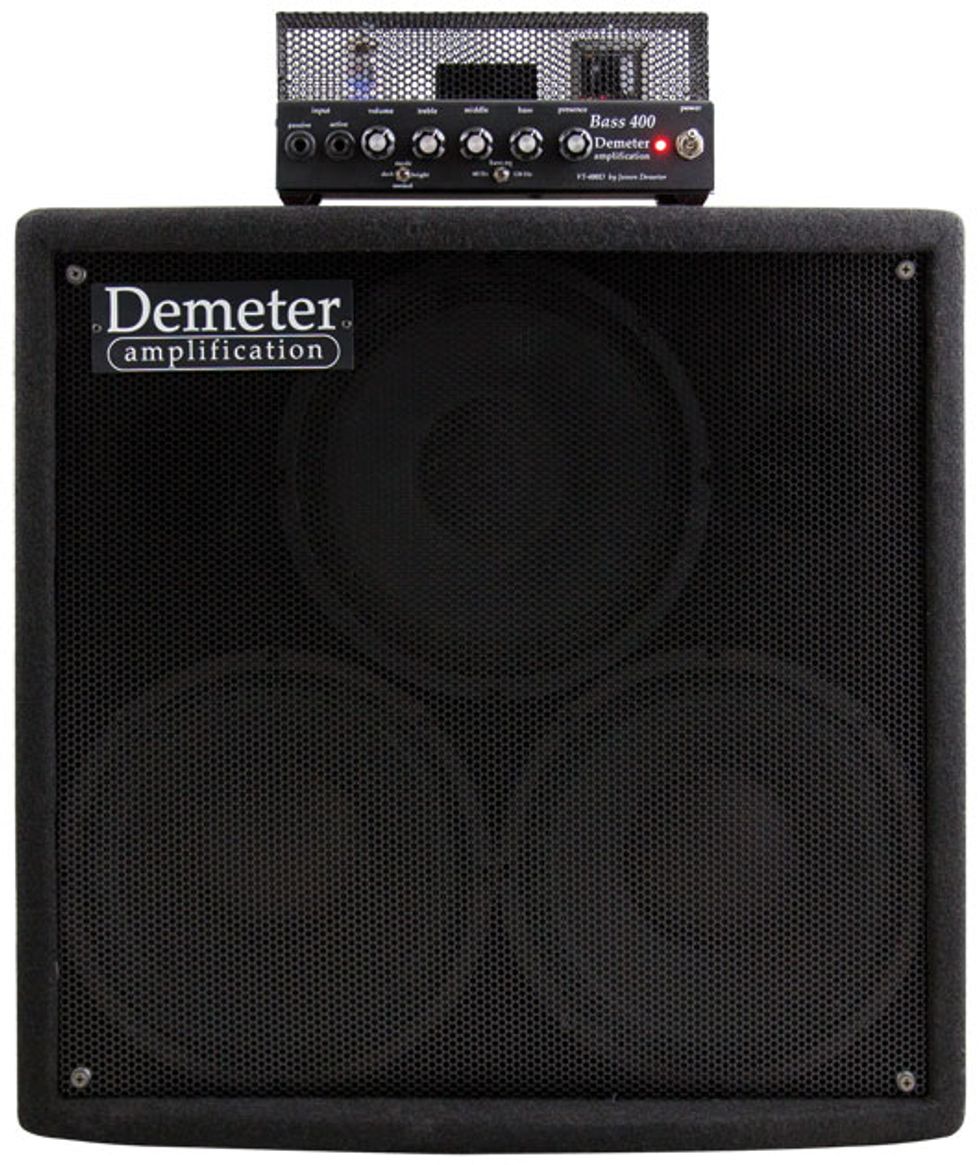
Demeter Bass 400
Designer James Demeter has been handcrafting high-end pedals and amps to the delight of players for 30-plus years. With the Premier Gear Award-winning Bass 400, he paired his revered VTBP-201 tube preamp with a class-D power amp to deliver a rig that’s lighter on the back and pocketbook, yet remains plenty heavy in tone.
$999 street, demeteramps.com
Click here to read the full review

Reverend Descent H90 Baritone
Shawn Hammond ventured that the H90 might be the most versatile baritone electric on the market. With potent Railhammer pickups and sound-shaping features, including powerful tone and bass contour controls, it’s hard to argue against that assertion. The H90 is stout, affordable, and capable of sounds from fabulously fat to searing.
$999 street, reverendguitars.com
Click here to read the full review
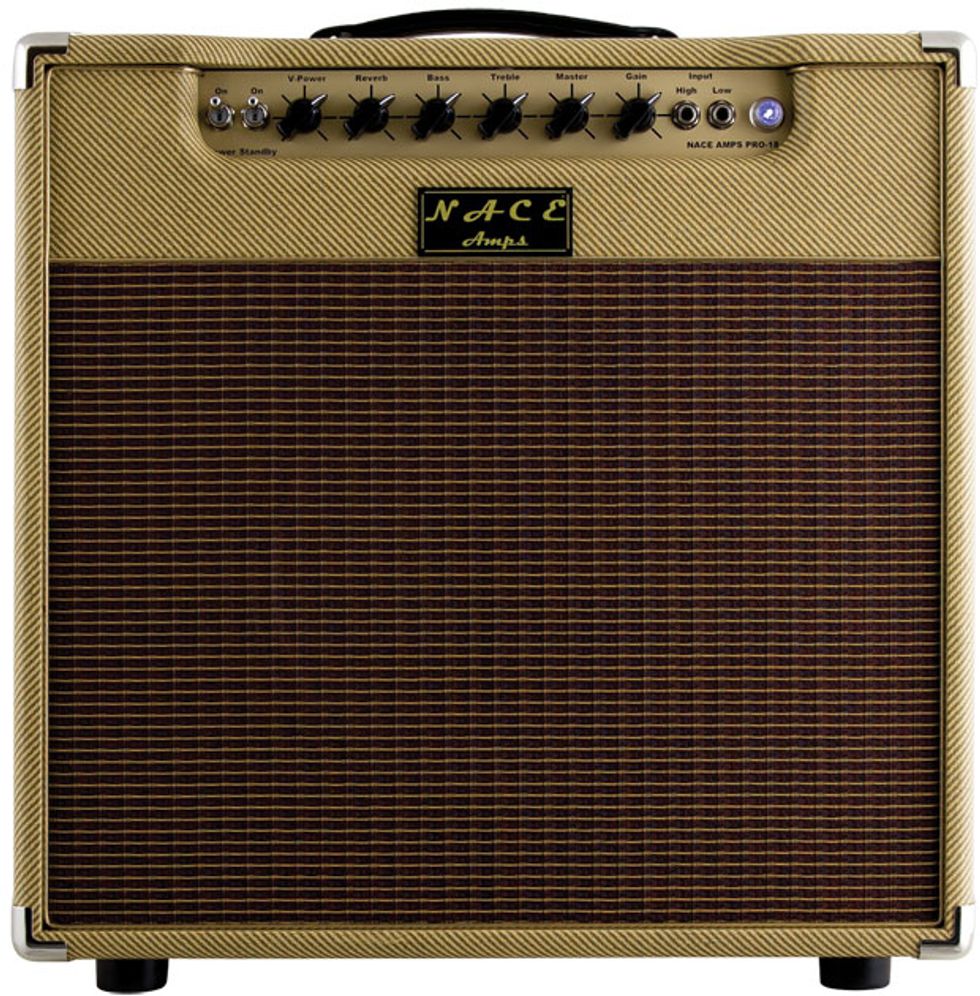
Nace PRO-18 Tolex Combo
Our esteemed colleague Ted Drozdowski has done a gig or two in his time, so when he called the PRO-18 “a damn-near perfect gigging machine,” we figured this classy little EL84 tweedster had a thing or two going for it. And while Ted found the Nace capable of the rowdy brashness you’d expect from a Marshall-inspired circuit like this, he also found it capable of great nuance, and agreeable to guitars and pickups of every kind.
$1,799, naceamps.com
Click here to read the full review
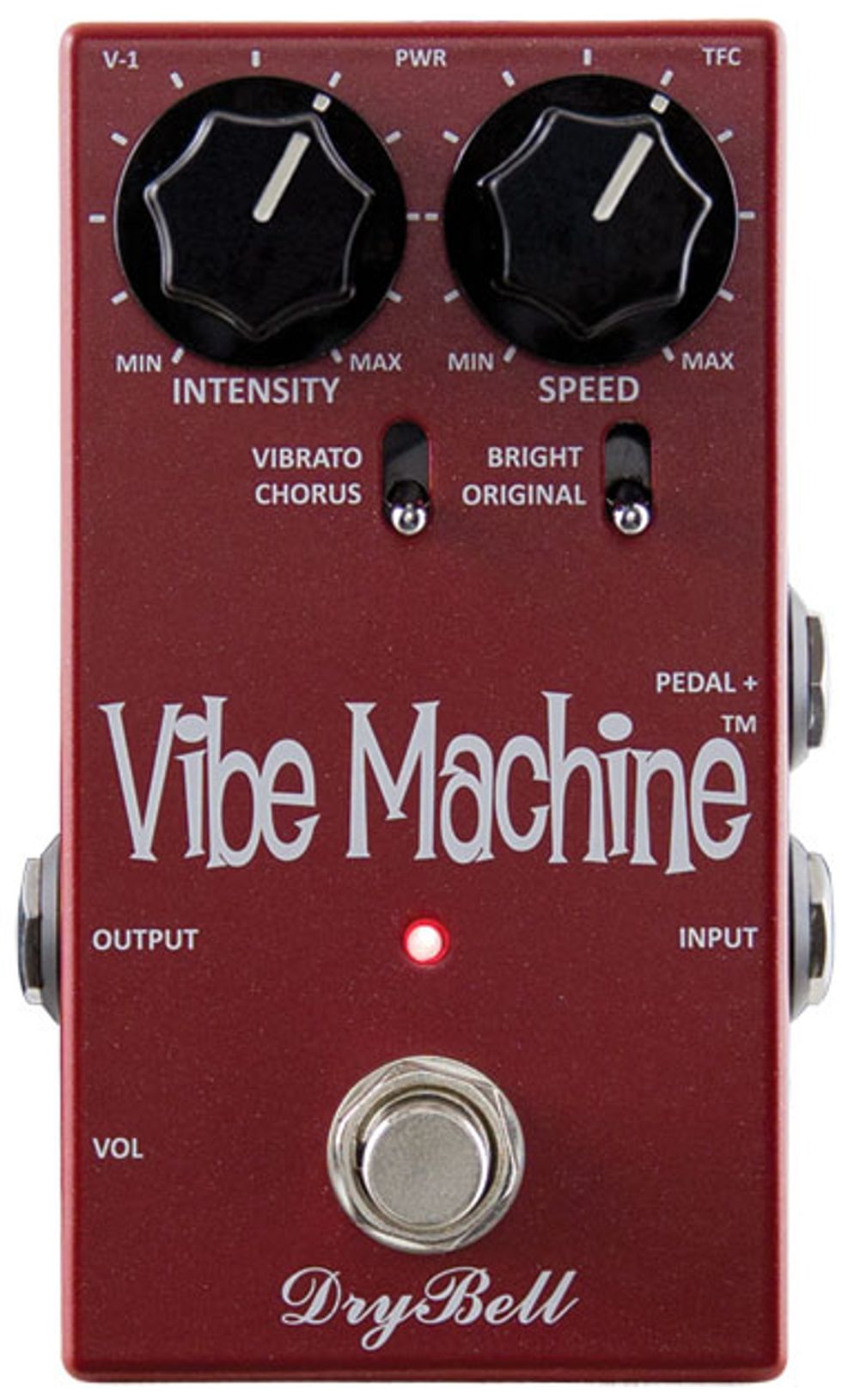
DryBell Vibe Machine
Croatia’s DryBell did not dabble in half measures when they built this Shin Ei Uni-Vibe clone. The photocells at the heart of the pedal (a must for any real Uni-Vibe clone) are all carefully matched and tested. The extra work yields a fantastically rich and authentic Uni-Vibe-style stomp, complete with expression-pedal functionality.
$295 street, drybell.com
Click here to read the full review
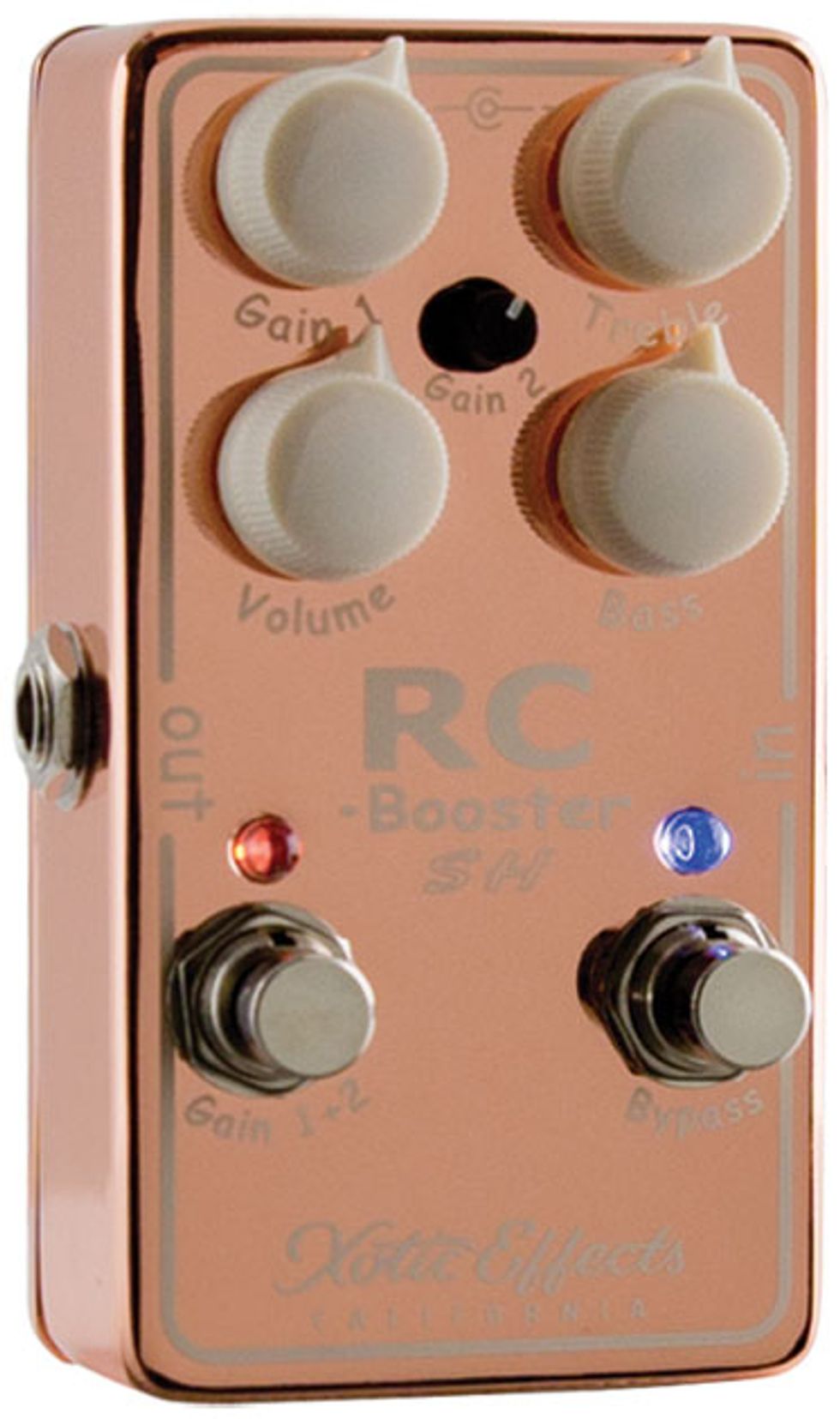
Xotic RC-Booster SH
This groovin’ collaboration between fusion guru Scott Henderson and Xotic is a dual-channel version of the company’s flagship pedal, the RC Booster. Its two voices—a clear, warm transparent boost and a singing, saturated lead mode—both respond well to picking dynamics. The RCB-SH is ideal for players who are happy with their core tone, but seek a little extra kick to make their guitar stand out onstage.
$168 direct, xotic.us
Click here to read the full review
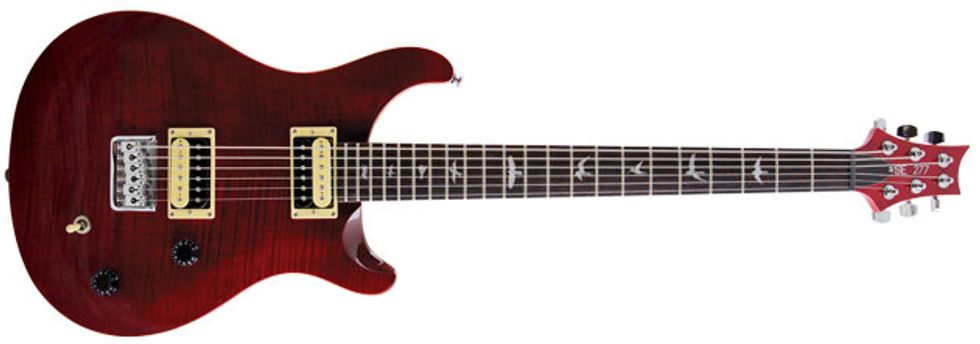
PRS SE 227 Baritone
We were not at all surprised when the PRS SE 227 turned out to be an exquisitely built and playable baritone electric—we’re used to that sort of thing from Paul Reed Smith. What really knocked us out was how sonically adaptable and varied the 227 turned out to be. With nuanced, low-output pickups that proved equally capable of delivering raging rock and softer, snappier fare, it’s one of the more multifaceted and value-packed baris we’ve run into in years.
$749 street, prsguitars.com
Click here to read the full review
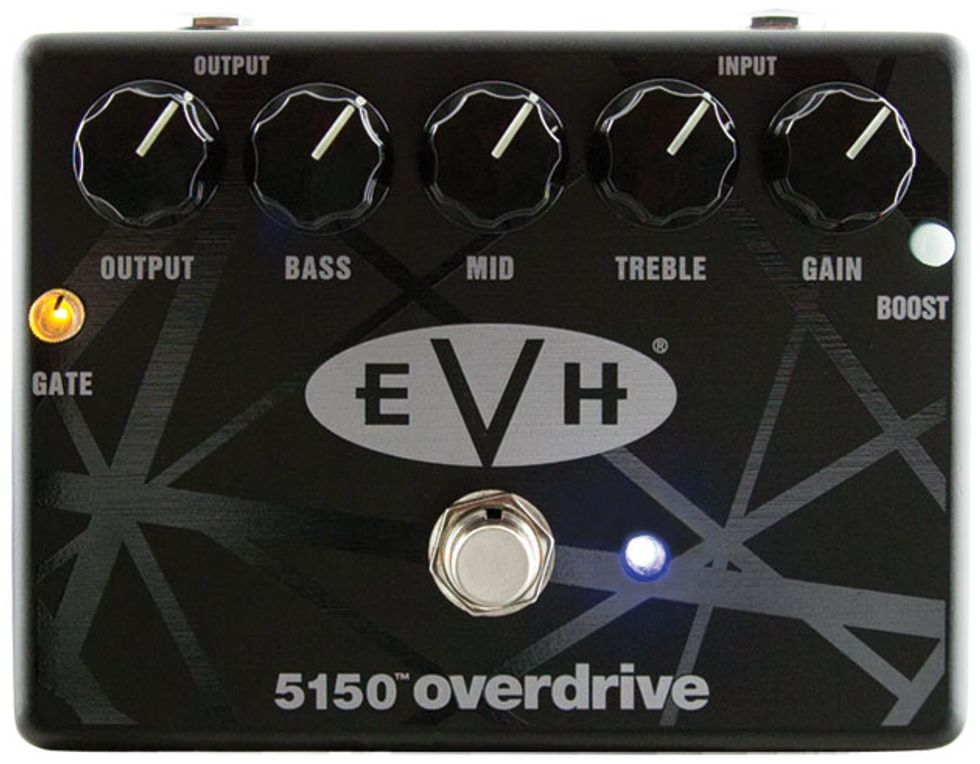
MXR 5150 Overdrive
Promising any aspect of Eddie Van Halen’s tone in a box is tricky business. The dude is a magician and you don’t cop that kind of wizardry through circuits. But in terms of enabling the quest for Eddie-dom, it would be hard to find a more capable tool than the 5150 Overdrive. Sensitive, aggressive, and surprisingly tweakable, the feature-packed stomp offers a killer path to the brown sound and beyond.
$199 street, jimdunlop.com
Click here to read the full review
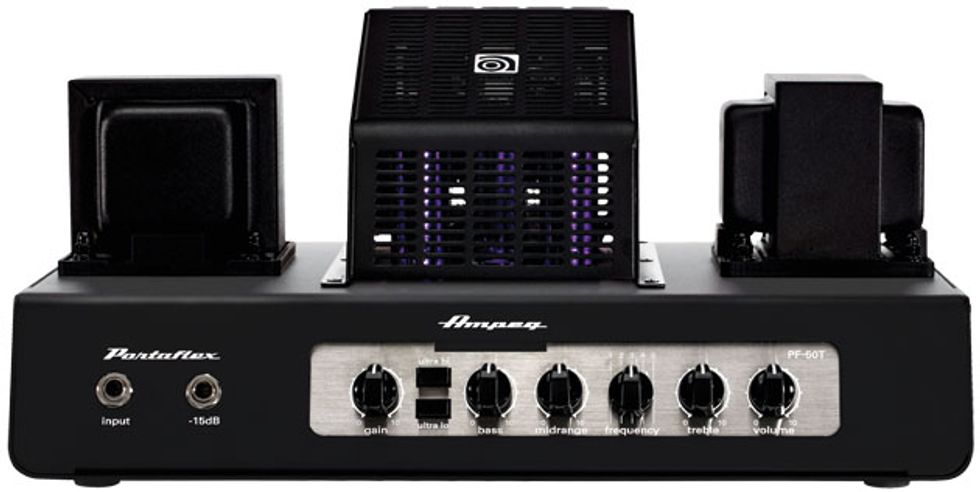
Ampeg PF-50T
The all-tube PF-50T might not be laden with bells and whistles, but this classic-looking head thoroughly impressed reviewer Steve Cook with its rich vintage warmth, handy dual DIs, and very attractive price for an amp of this caliber.
$899 street, ampeg.com
Click here to read the full review
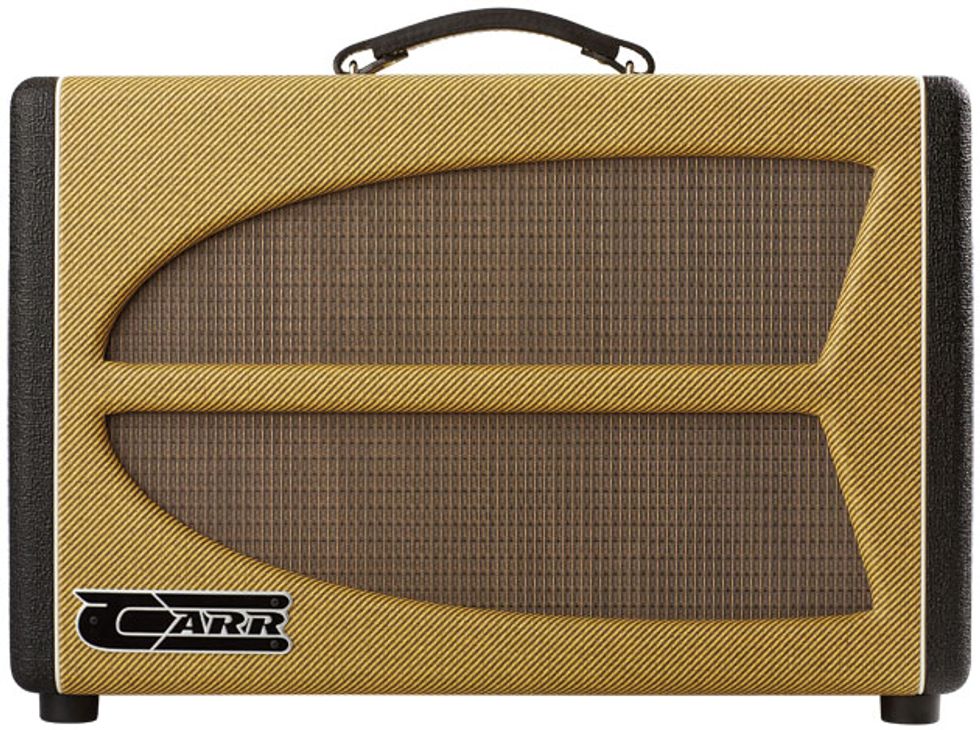
Carr Lincoln
Joe Gore called Carr’s Lincoln a “freewheeling fantasia on Voxiness,” a description that’s not just reflective of the Carr’s design inspirations but also of its abundant color and personality. Like just about every Carr that’s crossed our transom, it’s beautifully built. But it’s the bounty of complex, rich, and rainbow-spectrum Brit-tones on tap that put us over the moon for the Lincoln.
$2,980 street, carramps.com
Click here to read the full review

Sire Marcus Miller V7
Sire stirred up more than a splash in the bass community with their sub-$500 Marcus Miller V7 this year. The tones, construction, and aesthetics impressed reviewer David Abdo so much that he bestowed very heavy praise: “In fact, it might be one of the best production J-style basses out there regardless of price.”
$499 street, sire-usa.com
Click here to read the full review
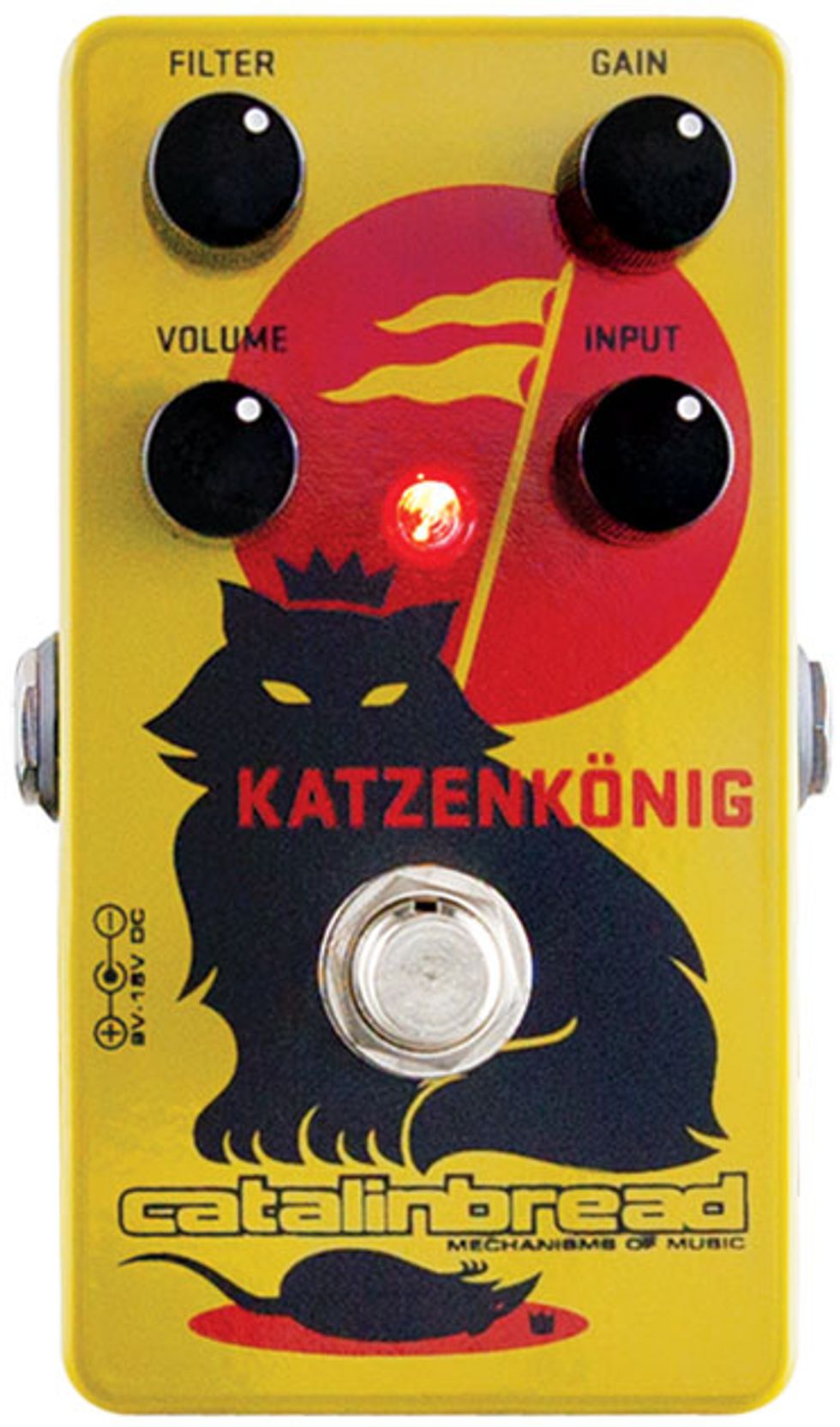
Catalinbread Katzenkönig
As Joe Gore pointed out in his review of the Katzenkönig, working with old circuits need not rule out creativity. The Katzenkönig proves the power of imaginative circuit DNA scrambling—mating the raw potency of Tone Bender MKII on the front end with the tone shaping power and thrust of a RAT on the output end. The result is tight, tough, explosive, surprisingly easy to wrangle, and above all refreshingly original.
$169 street, catalinbread.com
Click here to read the full review

RJM Mastermind PBC
On the surface, pedal switching seems like a very mechanical task, but RJM’s Mastermind PBC reveals how judiciously applied doses of digital functionality can expand the potential of an affordable switcher in really practical ways. With 768 possible presets, you’ll almost certainly run out of licks before you exhaust the compact RJM’s possibilities.
$999 street, rjmmusic.com
Click here to read the full review

Boss ES-8
Power, ease of use, and an accessible price. This wouldn’t be the first time we’d used this loose group of descriptors for a Boss product. But given all the ES-8 pedal switcher does (800 presets and deep programmability) and it’s affordability relative to the competition, the ES-8 is a great value and a killer foundation for any busy pedalboard.
$699 street, bossus.com
Click here to read the full review
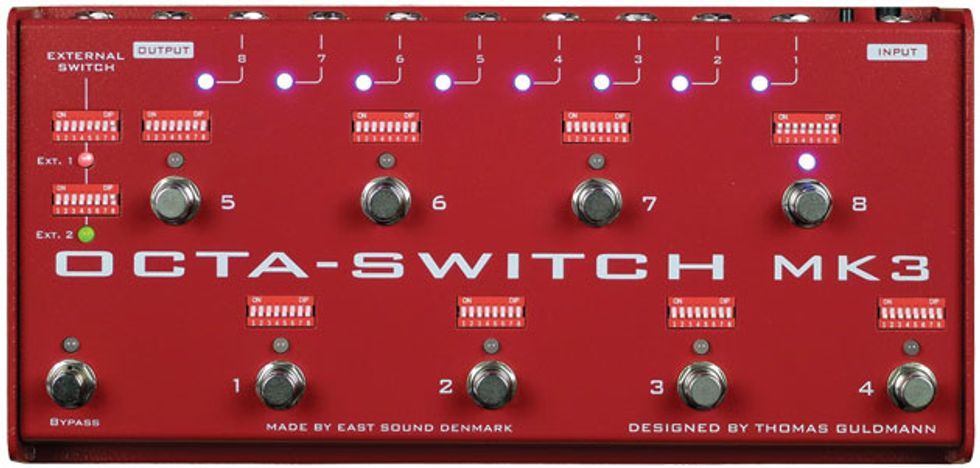
Carl Martin Octa-Switch MK3
The Octa-Switch MK3 proved there’s still room for straightforward mechanical simplicity in the fast-evolving realm of pedal switching. With its intuitive operation, it’s especially suited to neophyte switcher users. And with a $427 price, it represents one of the best bang-for-the-buck propositions in the pedal switcher game.
$427 street, carlmartin.com
Click here to read the full review

Ernie Ball/Music Man St. Vincent
It’s no surprise that a guitarist as potent and delightfully irreverent as Annie Clark would help conceive an axe as potent and irreverent as her signature Ernie Ball/Music Man, the St. Vincent. The three mini-humbuckers add up to a multitude of possible voices, while the superb playability translates not just to comfort, but huge expressive possibilities.
$1,899 street, music-man.com
Click here to read the full review
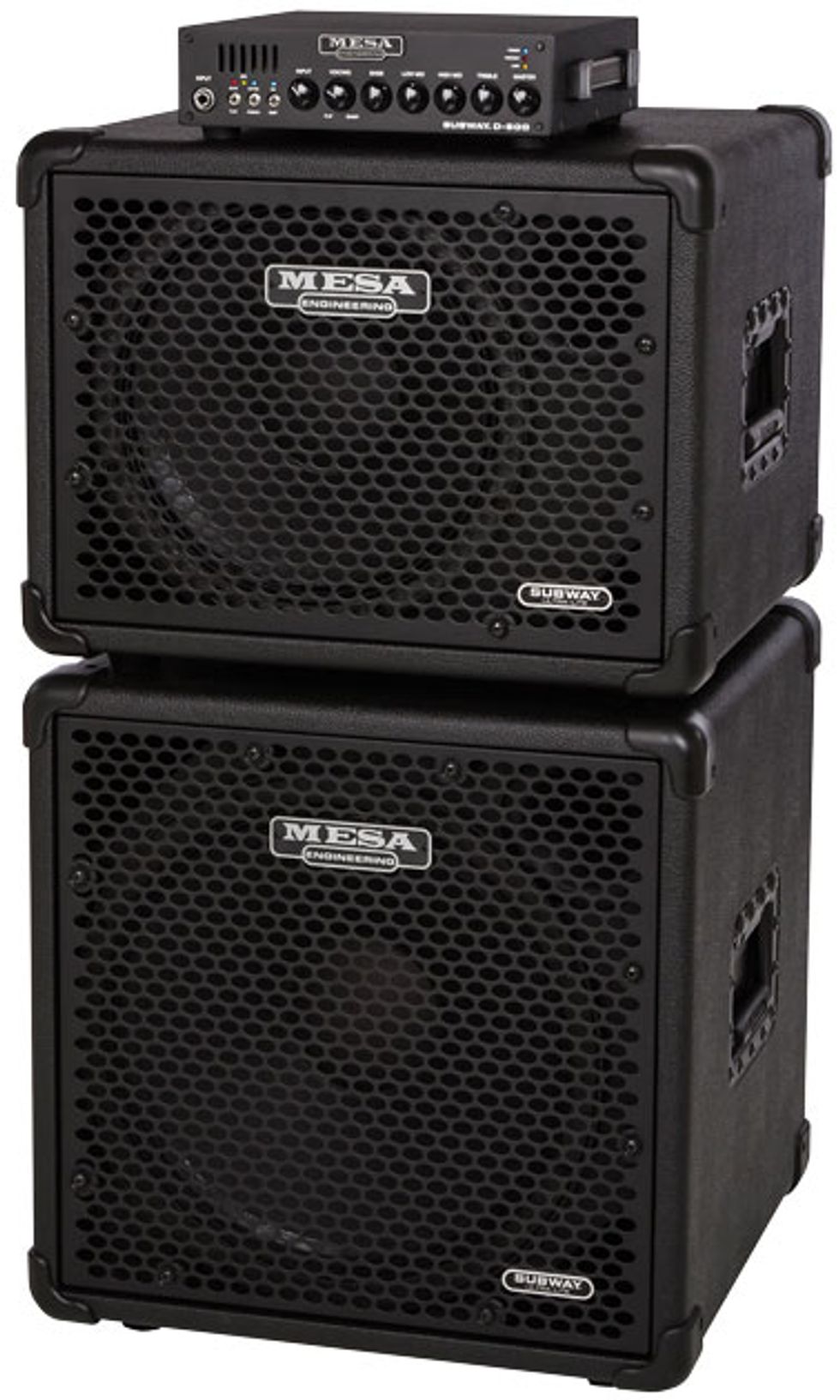
Mesa/Boogie Subway D-800
Mesa’s highly anticipated entry into the lightweight class-D game did not disappoint reviewer Jordan Wagner, who was especially taken with the amp’s EQ. The smart-looking 800-watt powerhouse might weigh in at a slim 5 1/2 pounds, but as Wagner remarked, “Even with the input and master knobs conservatively set to 10 o’clock, the rig packed quite a wallop.”
$699 street, mesaboogie.com
Click here to read the full review
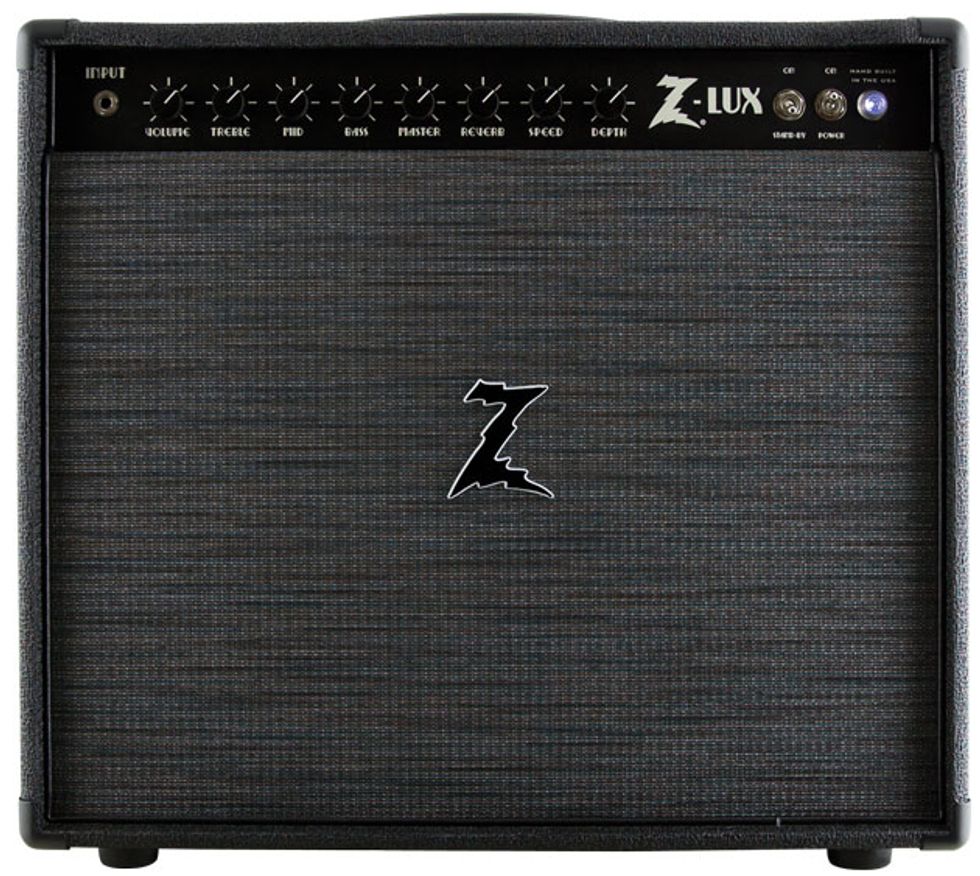
Dr. Z Z-Lux
In its all-gray-and-black guise, Dr. Z’s Z-Lux is an unassuming creature. But with 40 watts of quad-6V6 power, high headroom, versatile EQ, and onboard spring reverb and tube tremolo, it’s an ideal partner for modern players who love mid-’60s American amp vibe and lots of wiggle room for their effects.
$2,399 street, drzamps.com
Click here to read the full review
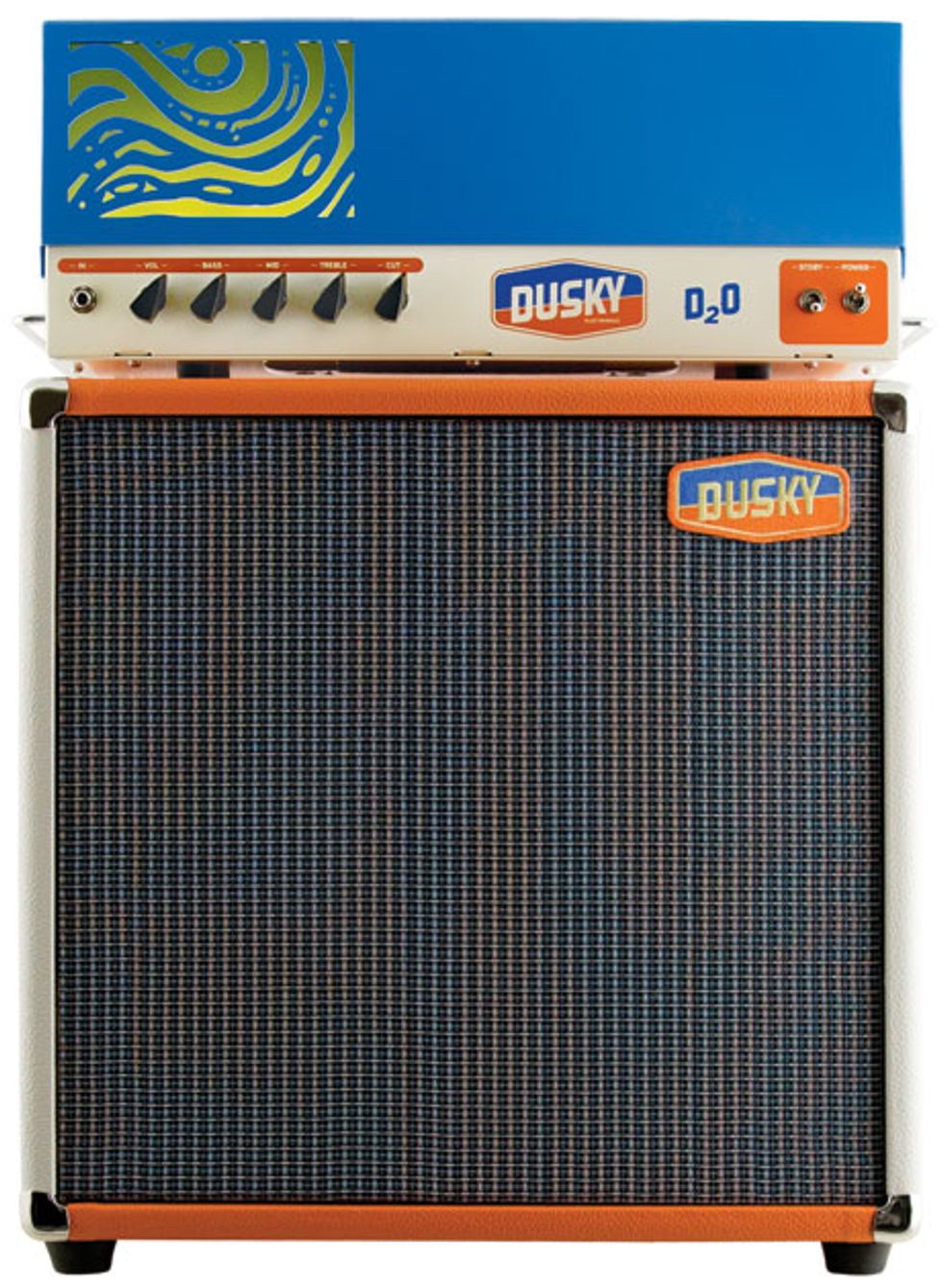
Dusky D₂O
The D₂O would probably walk away with the prize for “coolest-looking amp we tested all year.” But we discovered it also sounds every bit as killer as its pop-art look suggests. While the dual 6L6 power section suggests a blackface Fender clone, the D₂O delivered a Vox-like crunch that was fat with sustain, multifaceted, and delightfully full of surprises.
$1,500 street ($575 cabinet sold separately), duskyamp.com
Click here to read the full review
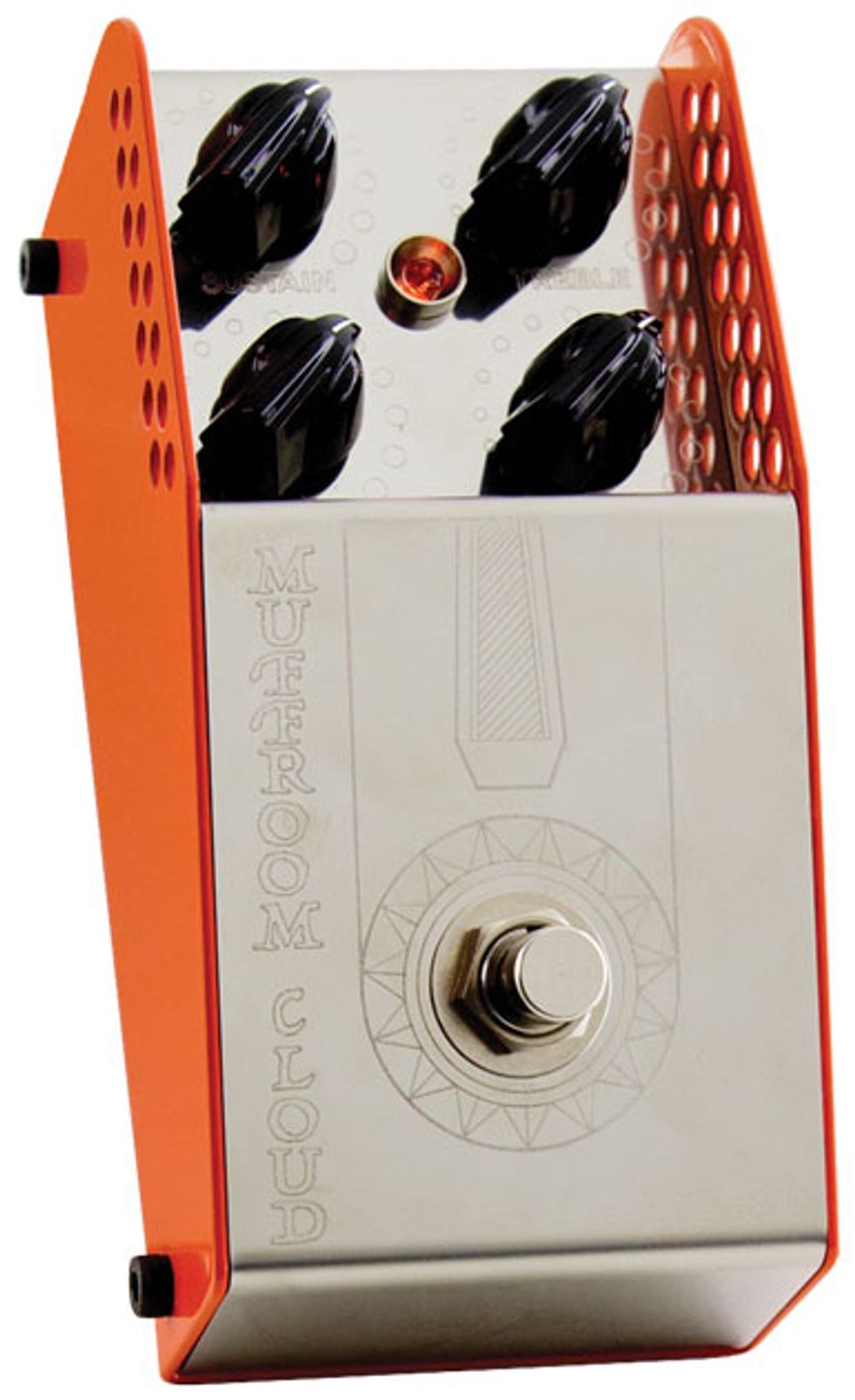
Thorpy FX Fallout Cloud
It’s a cliché to draw parallels between any English product and Her Majesty’s fave superspy, but in the case of the Thorpy Fallout Cloud (formerly known as the Muffroom Cloud), the mix of stylish tailoring, tough-as-nails build, and killer performance truly make it the 007 of Muff-inspired fuzzes. Indeed, Fallout Cloud sounds huge while maintaining a harmonic complexity and sophistication that’s worthy of Commander Bond himself.
$290 street, thorpyfx.com
Click here to read the full review
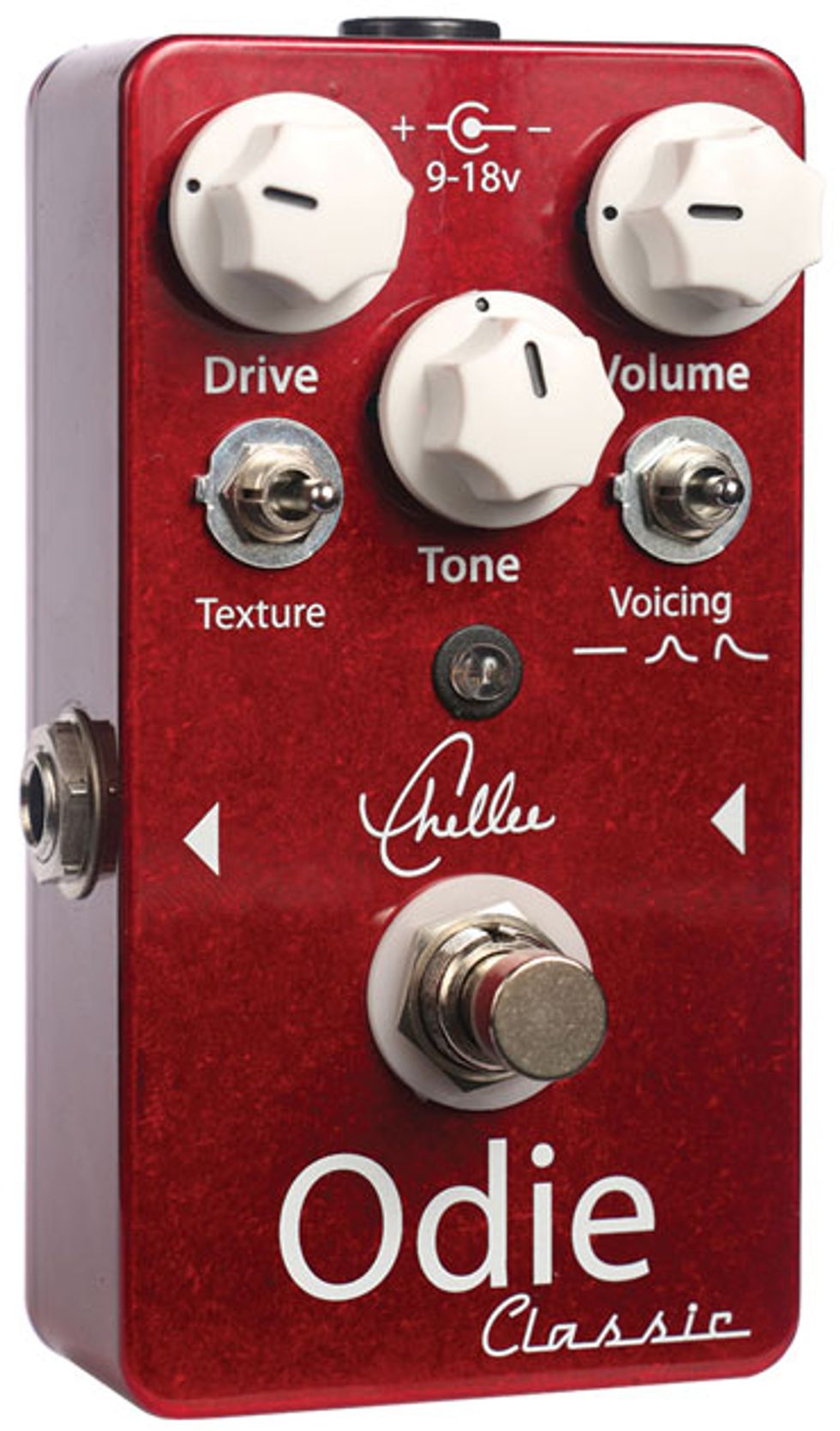
Chellee Odie Classic
The Odie Classic might be the Screamer-inspired overdrive for players who don’t like TS pedals. Reviewer Charles Saufley found it more open, oxygenated, and complex than his own vintage Tube Screamer (which he likes quite a bit). And at less than $150, it’s priced competitively with a lot of TS clones that can’t approach its wide-spectrum sonic profile.
$149 street, chellee.com
Click here to read the full review
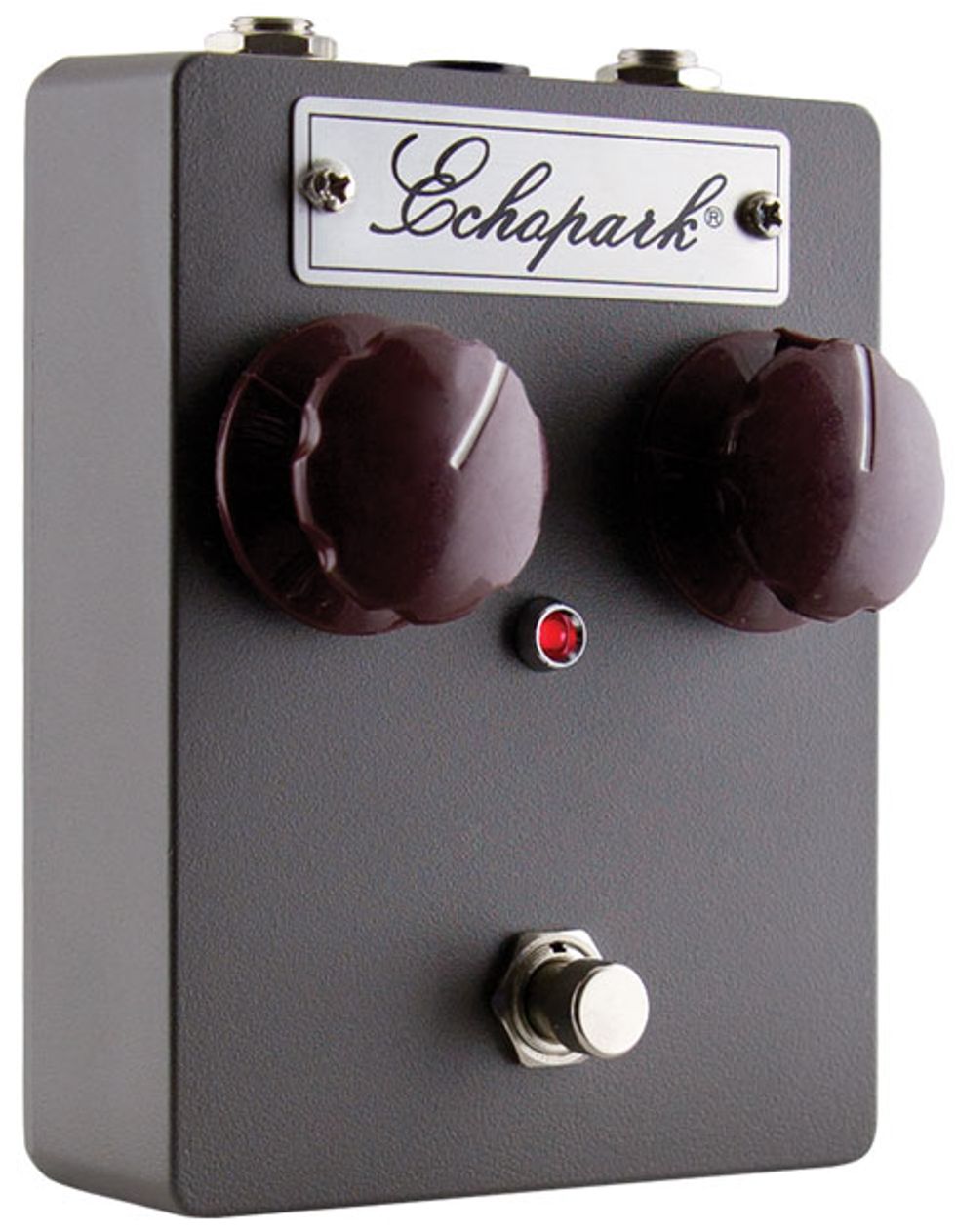
Echopark F-1
David Von Bader called the F-1 “foolproof, musical, and explosive.” That’s good, given that there are only two knobs to control this primitive, but sonically cultivated little beast. But while the minimalistic F-1 may appear limited, it’s wildly adaptable. Gray it may be, but this Echopark is a fuzz for all seasons.
$230 street, echoparkguitars.com
Click here to read the full review
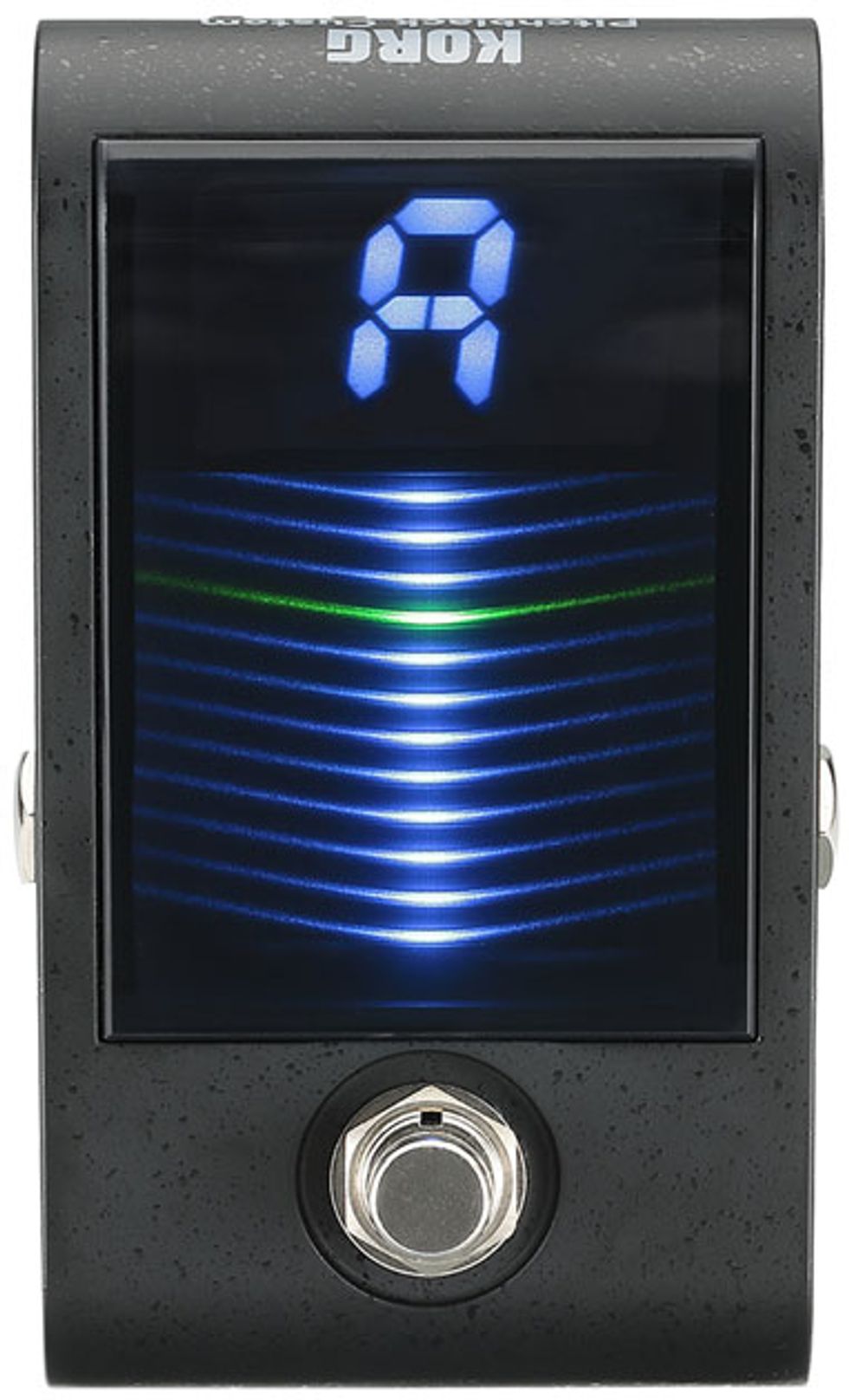
Korg Pitchblack Custom
Following in the footsteps of Korg’s successful Pitchblack tuner, the true-bypass Pitchblack Custom offers an improved detection range of +/- 0.1 cents, triple the battery life, a smaller enclosure, and a bigger display with four user-selectable meter modes. The Pitchblack Custom’s bright 3-D vertical strobe-like display instills confidence that this black box can handle its duties on the darkest stages.
$99 street, korg.com
Click here to read the full review
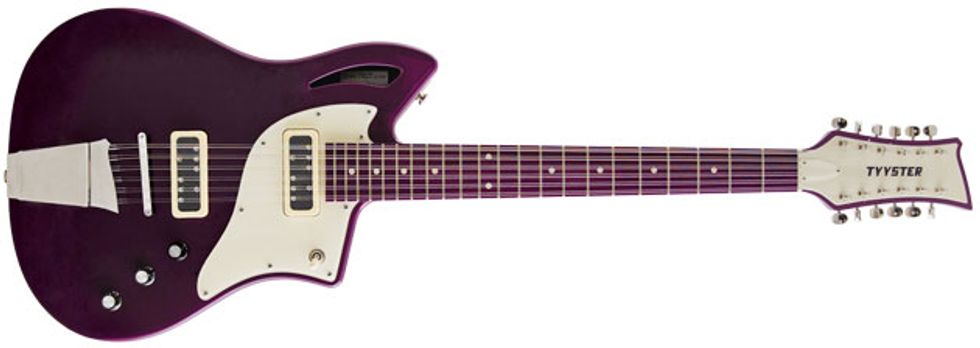
Tyyster Pelti 12-String
“Pelti” means sheet metal in Finnish, and that’s what luthier Ville Tyyster uses for the body of this immaculately built electric 12. If you love the crisp, jangly tones of classic 12-string electrics from Rickenbacker and Fender, the humbucker-equipped Pelti delivers in spades. But thanks to an internal contact mic, dual volume controls, and a stereo output, the Pelti offers exciting new sonic turf for hardcore jangle-holics to explore.
$4,570 street, sites.google.com/site/tyysterinkitarat/
Click here to read the full review
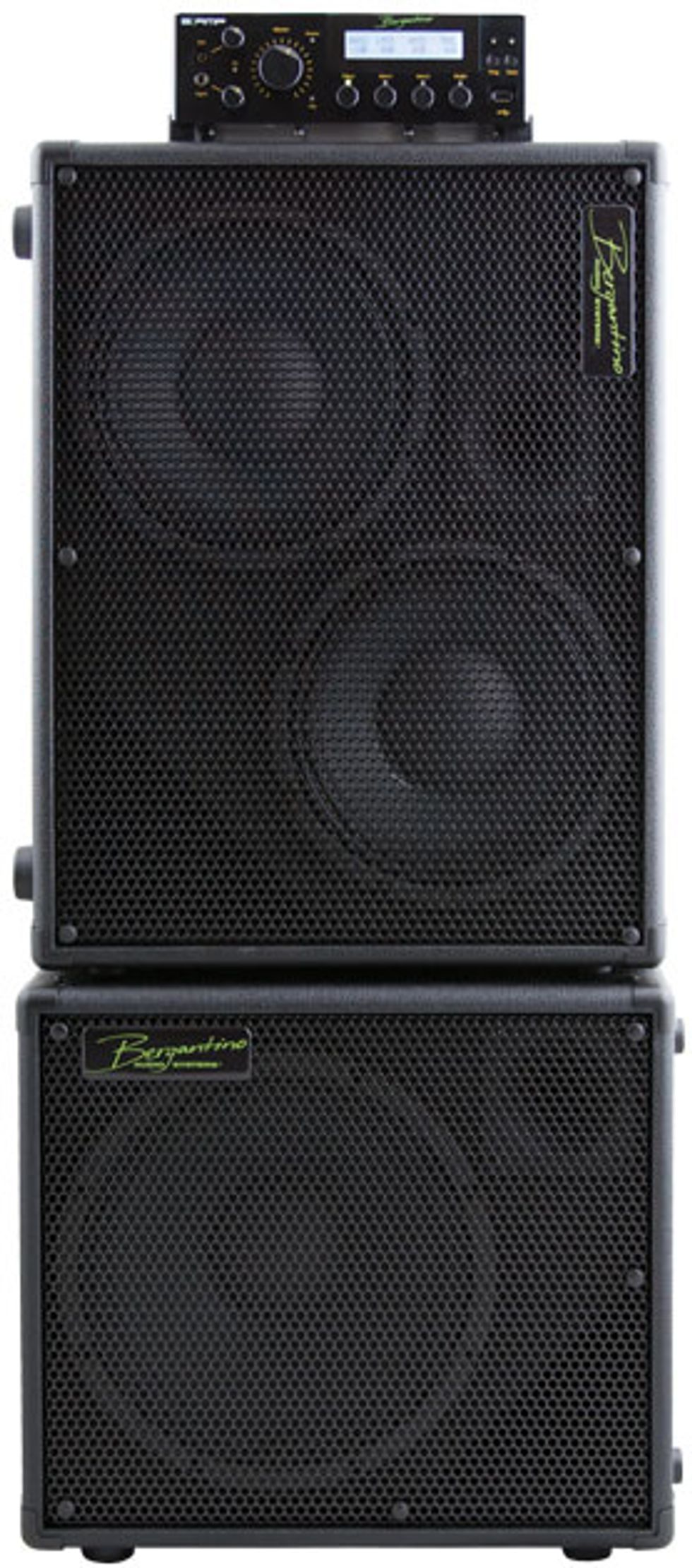
Bergantino Audio Systems B|Amp and HD112 & HD210 Cabinets
Already known for his standout bass cabinets, Jim Bergantino decided that the time was right to design his own amplifier. The resulting 700-watt B|Amp packs tons of tonal and operational features—most of which are governed by a quartet of knobs below the LCD display—into its 6 1/2 pound frame, and it received accolades aplenty from reviewer David Abdo for its loud, clean tone and sound-shaping ease. Paired with Bergantino HD112 and HD210 cabinets (also Premier Gear Award winners) that were praised for their “crushingly clean tone,” this rig proved to be the whole enchilada.
$1,399 street (B|AMP)
$729 street (HD112)
$829 street (HD210), bergantino.com
Click here to read the full review
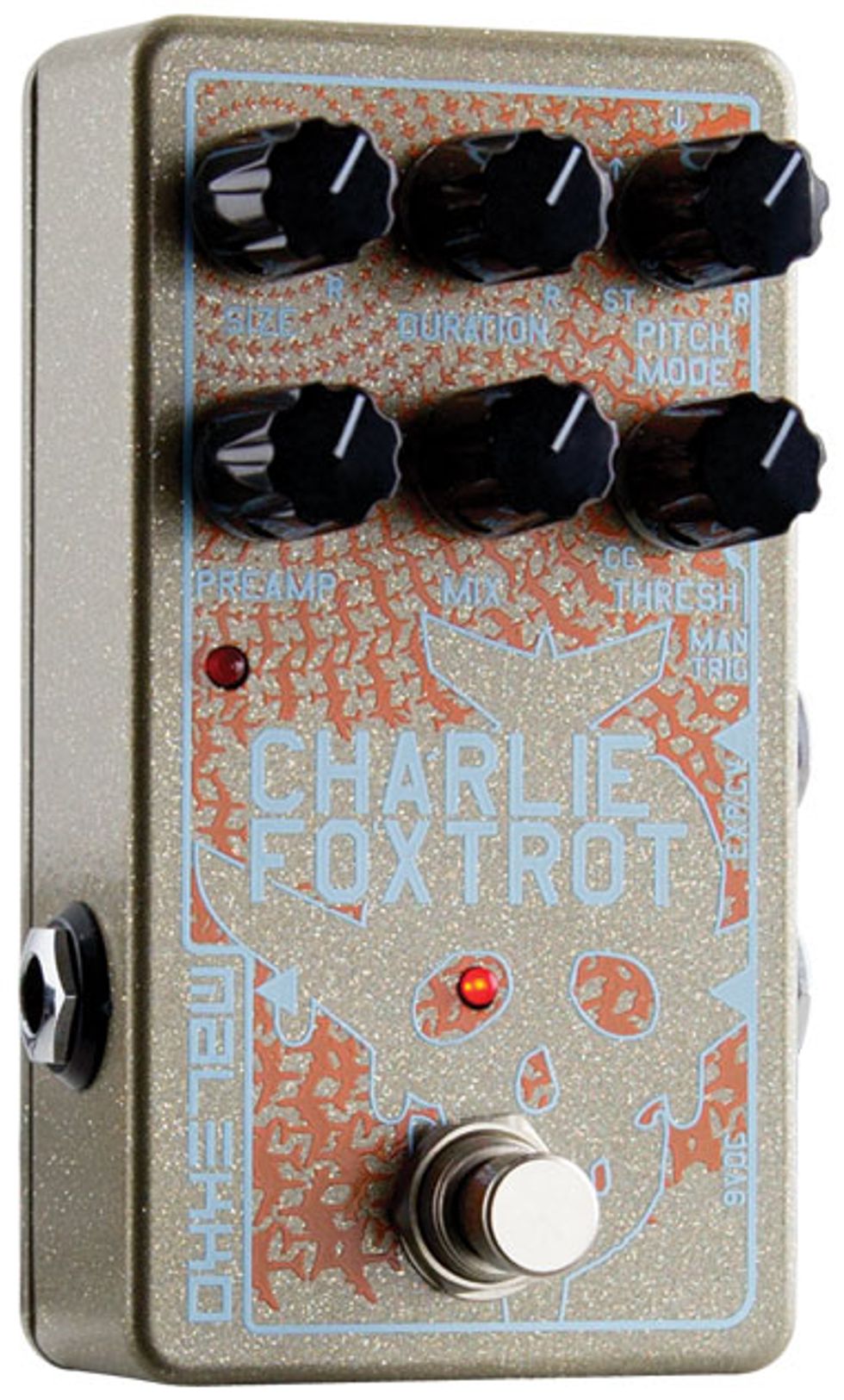
Malekko Charlie Foxtrot
Borrowing elements of a sampler/looper, a delay, and a pitch shifter, Charlie Foxtrot almost defies categorization. Once you grasp how the controls interact, Charlie avails textures ranging from subtly warped pitch hiccups to beautifully bizarre 10-second loops. The pedal delivers the sort of delicious dementedness you can typically attain only through complicated digital gear, but in a functional format even numbskulls can grok.
$189 street, malekkoheavyindustry.com
Click here to read the full review
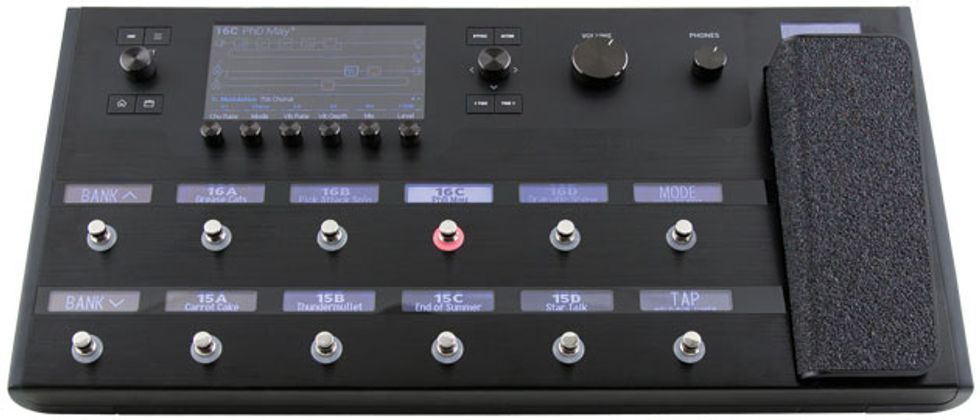
Line 6 Helix
An ambitious multi-effector with nearly 200 amp and pedal models, a built-in expression pedal, exceptional rear-panel connectivity, and large, bright, color-coded editing surfaces, Helix is an extraordinarily powerful recording and performing tool. Crafty guitarists might use it for composing and sound design, tracking to DAW via Helix’s quality convertors, gigging through a P.A., or bypassing Helix’s amp/cab simulations and playing through a conventional amp. Guitarists who like hanging out in the digital realm will be hard pressed to find a superior traveling companion.
$1,499 street, line6.com
Click here to read the full review
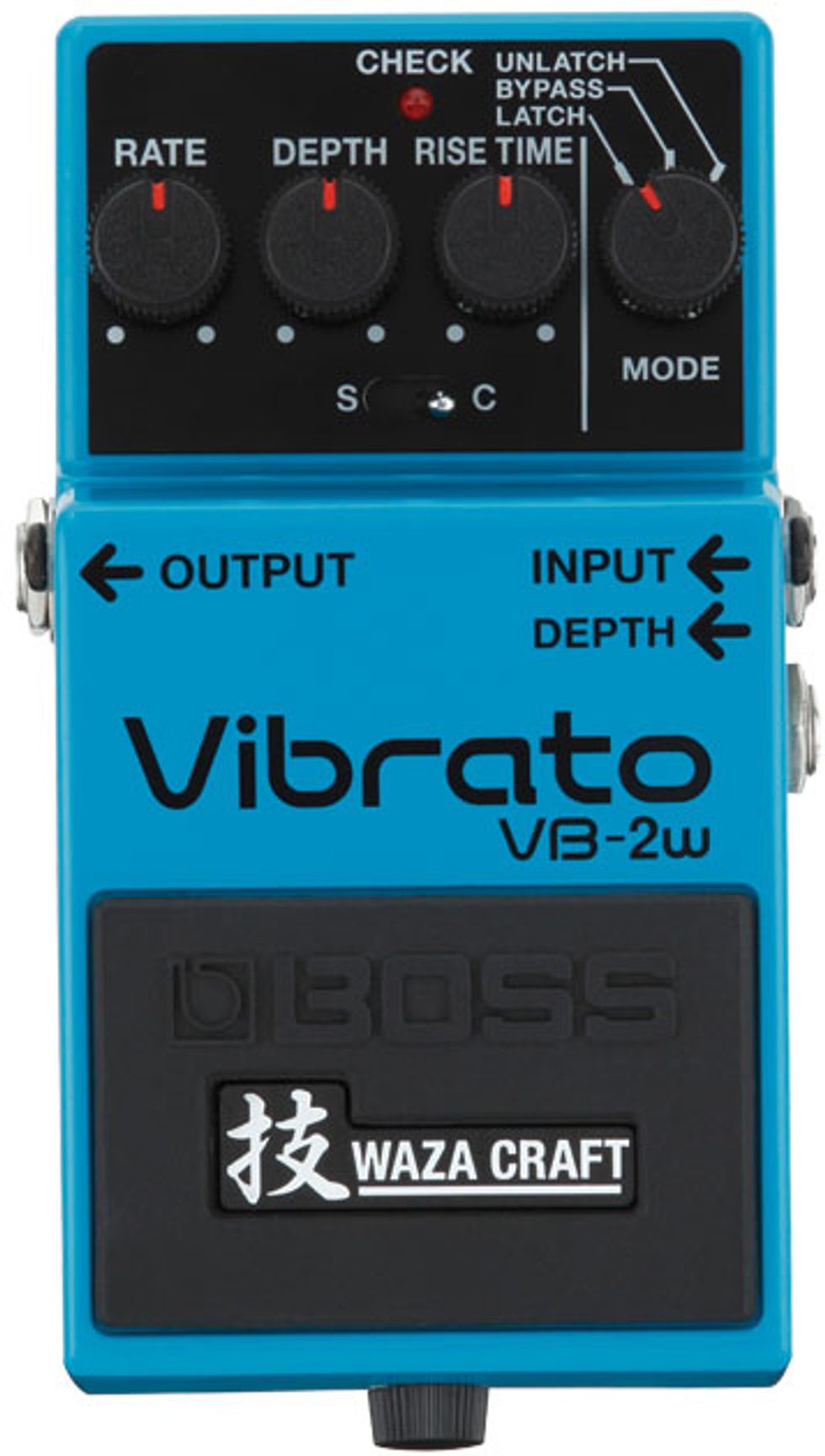
Boss VB-2W Waza Craft Vibrato
An enhanced version of the VB-2 Vibrato—a Boss pedal coveted for its relative rarity—the new VB-2W Waza Craft is a wonderfully quirky modulation device. Like the original, the VB-2W is an analog pitch wobbler, but it has a quieter circuit, a jack to control depth with an expression pedal, and two switchable voices. Those looking for unconventional sci-fi sonics will find them in the VB-2W.
$199 street, bossus.com
Click here to read the full review
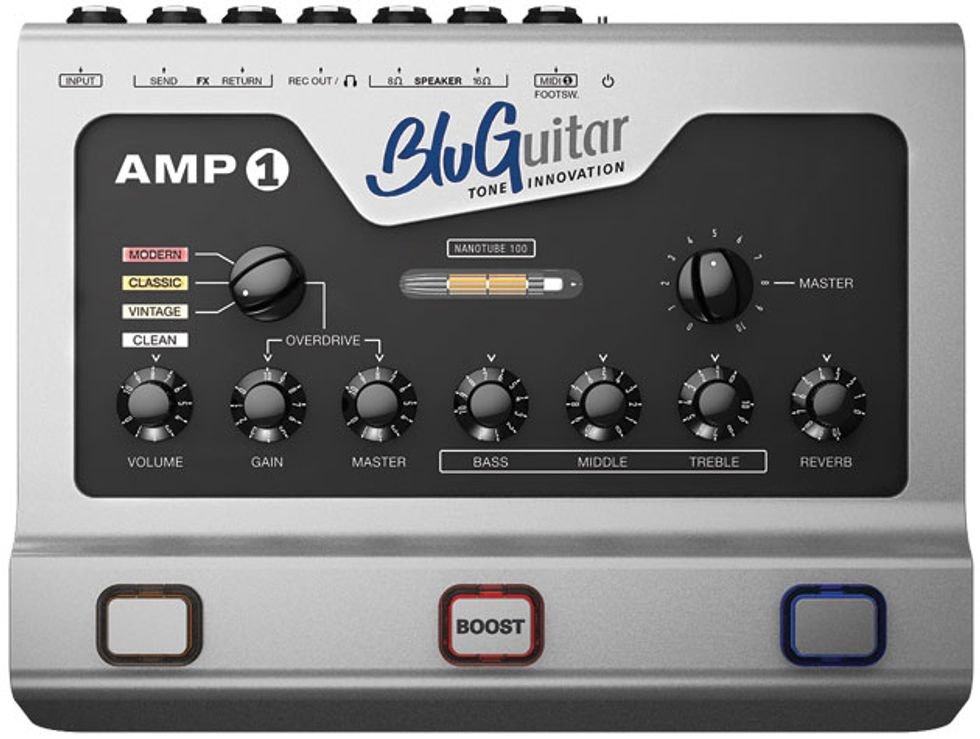
BluGuitar Amp 1
A 100-watt, 4-channel amplifier that can be mounted on a pedalboard? Meet the Amp 1, an ingenious device that combines a tube-powered preamp with a solid-state class-D power amp. Amp 1’s tones range from darn good to ridiculously good, and the 3-band EQ section works beautifully in all modes. Though not dramatic, the digital reverb is rich, musical, and convincingly spring-like. Amp 1 is a triumph of both engineering and sound design.
$799 street, bluguitar.com
Click here to read the full review
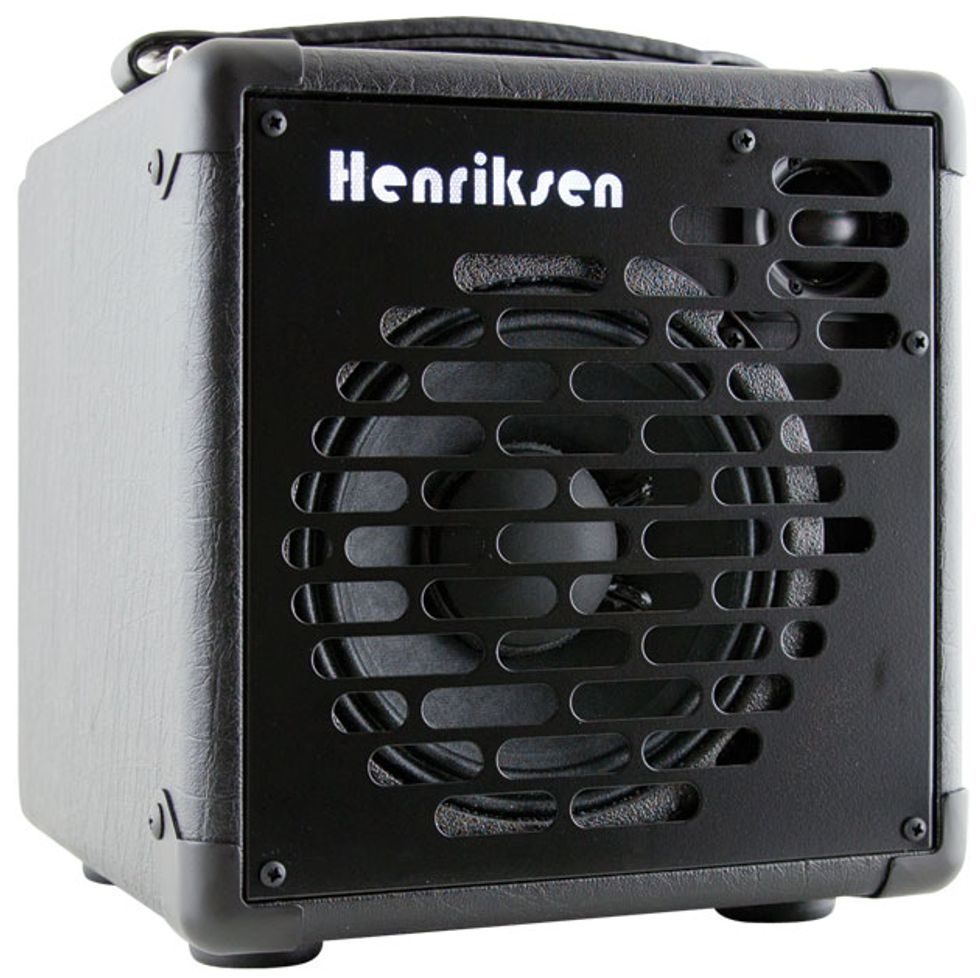
Henriksen Bud
Jazz and fingerstyle players are likely to love this tiny (9" x 9" x 9") 135-watt, solid-state combo, but the dual-channel Bud has a lot to offer guitarists of almost any musical persuasion. The Bud’s flexible inputs and outputs, excellent reverb, potent 5-band EQ, and burly low end make it ideal for small gigs. Need a personal monitor, teaching-room tool, or micro-PA for a laptop or tablet? This Bud’s for you.
$1,099 street, henriksenamplifiers.com
Click here to read the full review
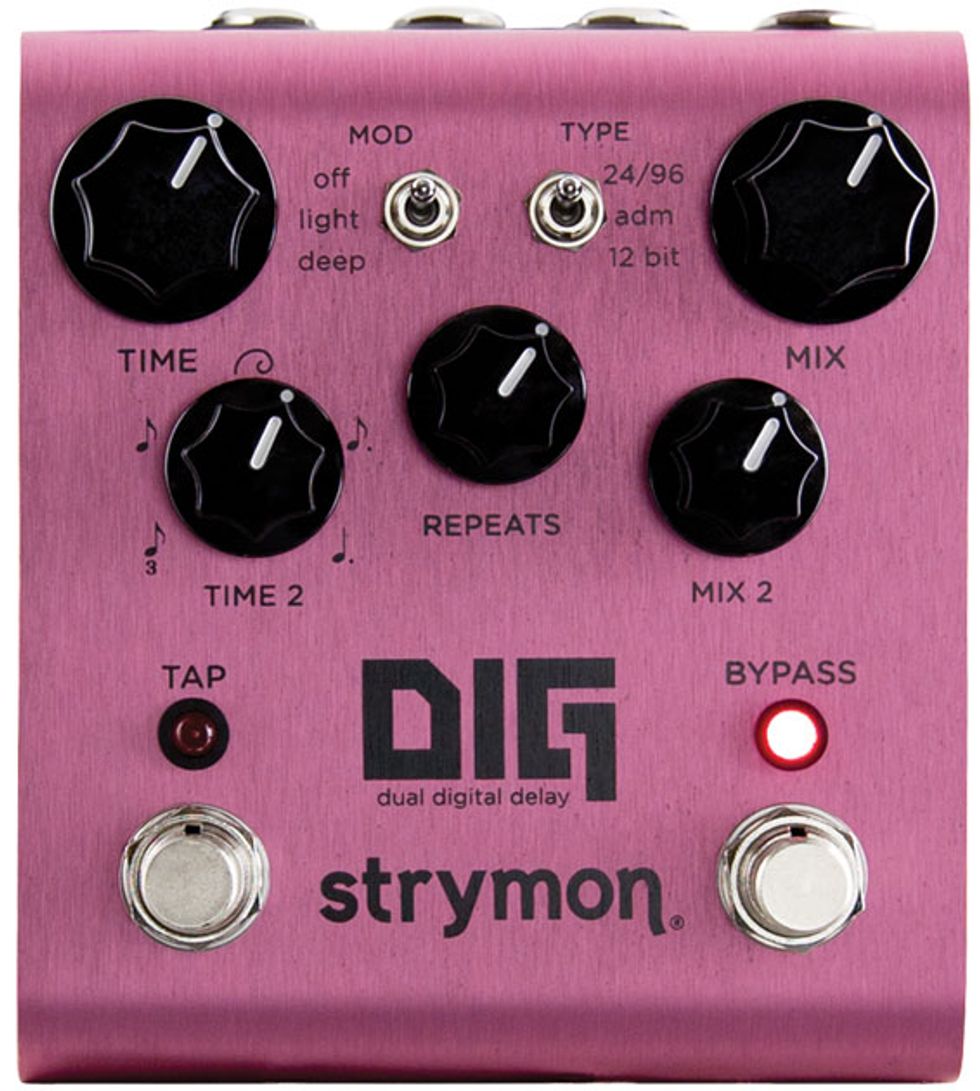
Strymon Dig Dual Digital Delay
With its two delays and flexible, interactive controls, Dig is a powerful echo-generating machine. It delivers the best of ’80s rack-device sounds, yet it feels as timeless as any echo unit out there. Triplet, eighth, dotted-eighth, and dotted-quarter settings let you dial in intriguing rhythmic repeats, and its three resolution settings and many “hidden” secondary functions means Dig adds up to more than meets the eye.
$299 street, strymon.net
Click here to read the full review

Fender American Elite Precision Bass
Reviewer Steve Cook discovered P-bass glory with the Fender American Elite model that’s outfitted with a noiseless P/J configuration and active electronics capable of covering a vast tonal landscape. Cook says, “Yes, plenty of basses are marketed as built for all styles of music, but the American Elite Precision can truly back this claim.” Superior tone, killer components, and an impressive build? That’ll seal the deal for a Premier Gear Award.
$1,799 street, fender.com
Click here to read the full review
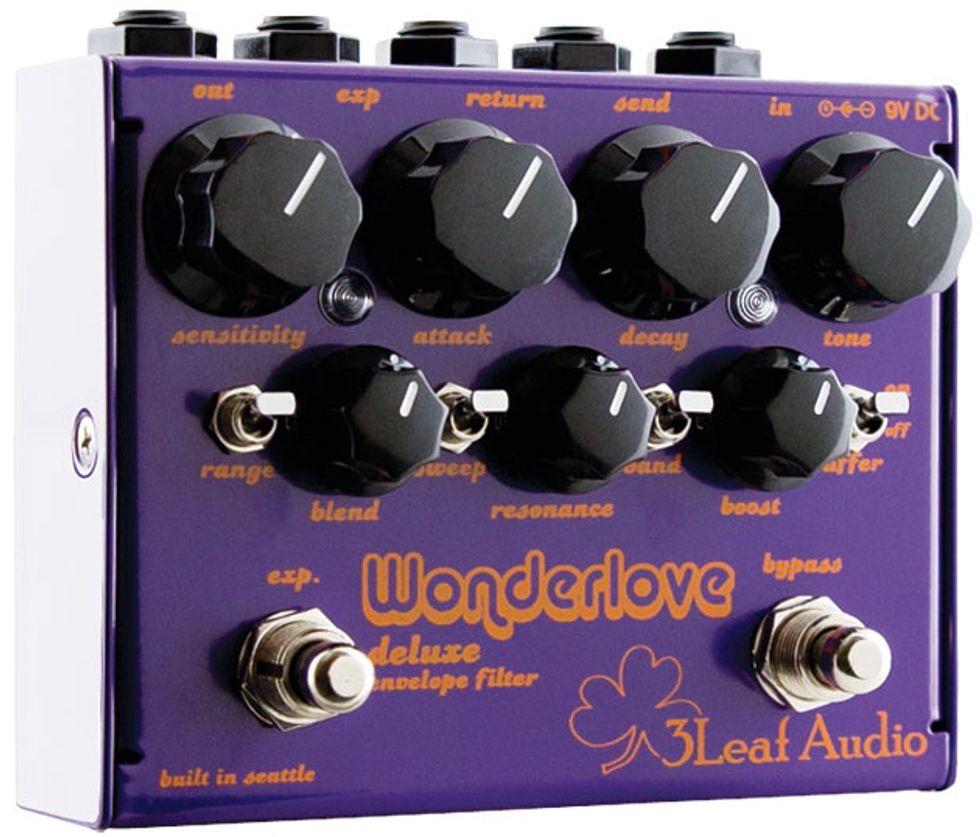
3Leaf Audio Wonderlove
Players who dig the Mu-Tron III will adore Wonderlove, a potent envelope filter from Seattle’s 3Leaf Audio. It covers all the Mu-Tron III bases while adding controls to unlock sounds you can’t coax from a vintage unit. Well made and reasonably priced considering its quality hardware and design innovations—which include a built-in effects loop—Wonderlove nails expected envelope filter tones, plus many others.
$299 street, 3leafaudio.com
Click here to read the full review
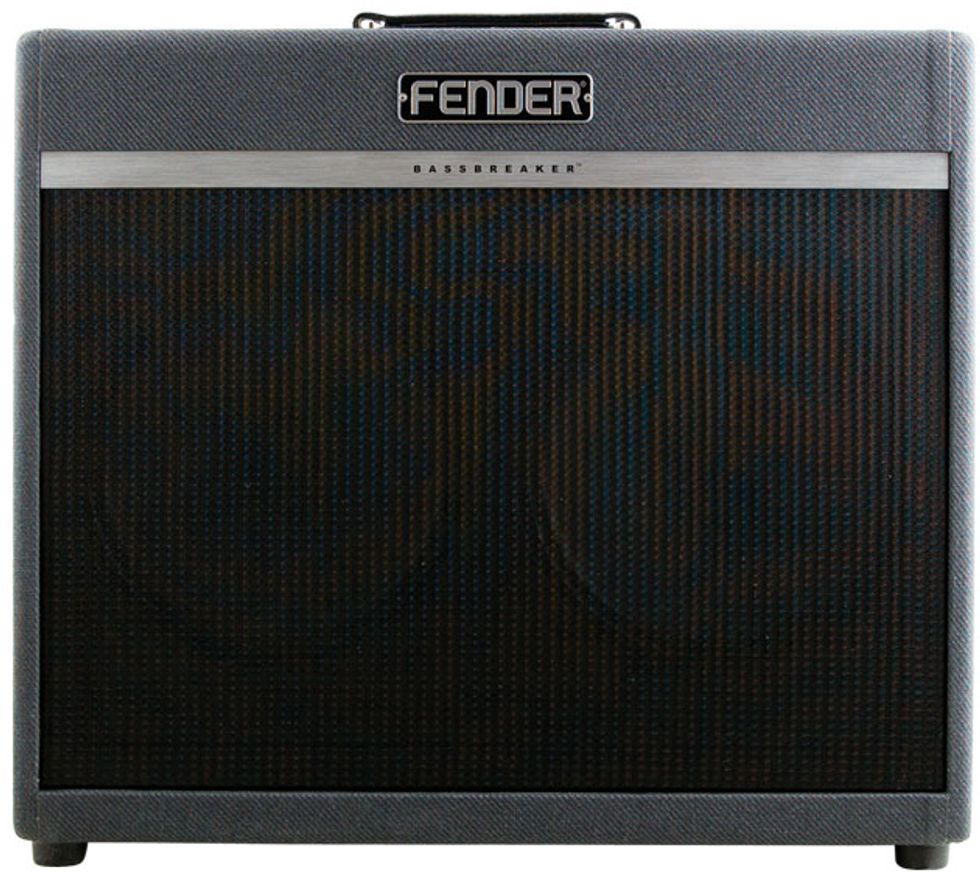
Fender Bassbreaker 45
Early Marshall amps “borrowed” heavily from the Fender Bassman circuit, a point Fender underscores with their 2-channel Bassbreaker 45. The 45-watt 2x12 combo mates a vintage Fender-style circuit with a pair of EL34s to create a distinctly British flavor with lots of headroom. Equipped with powerful 70-watt Celestion G12s, a hefty transformer, an attenuator, and a clever scheme for connecting the dual channels in series, this amp delivers classic tones at a cost-conscious price.
$999 street, fender.com
Click here to read the full review
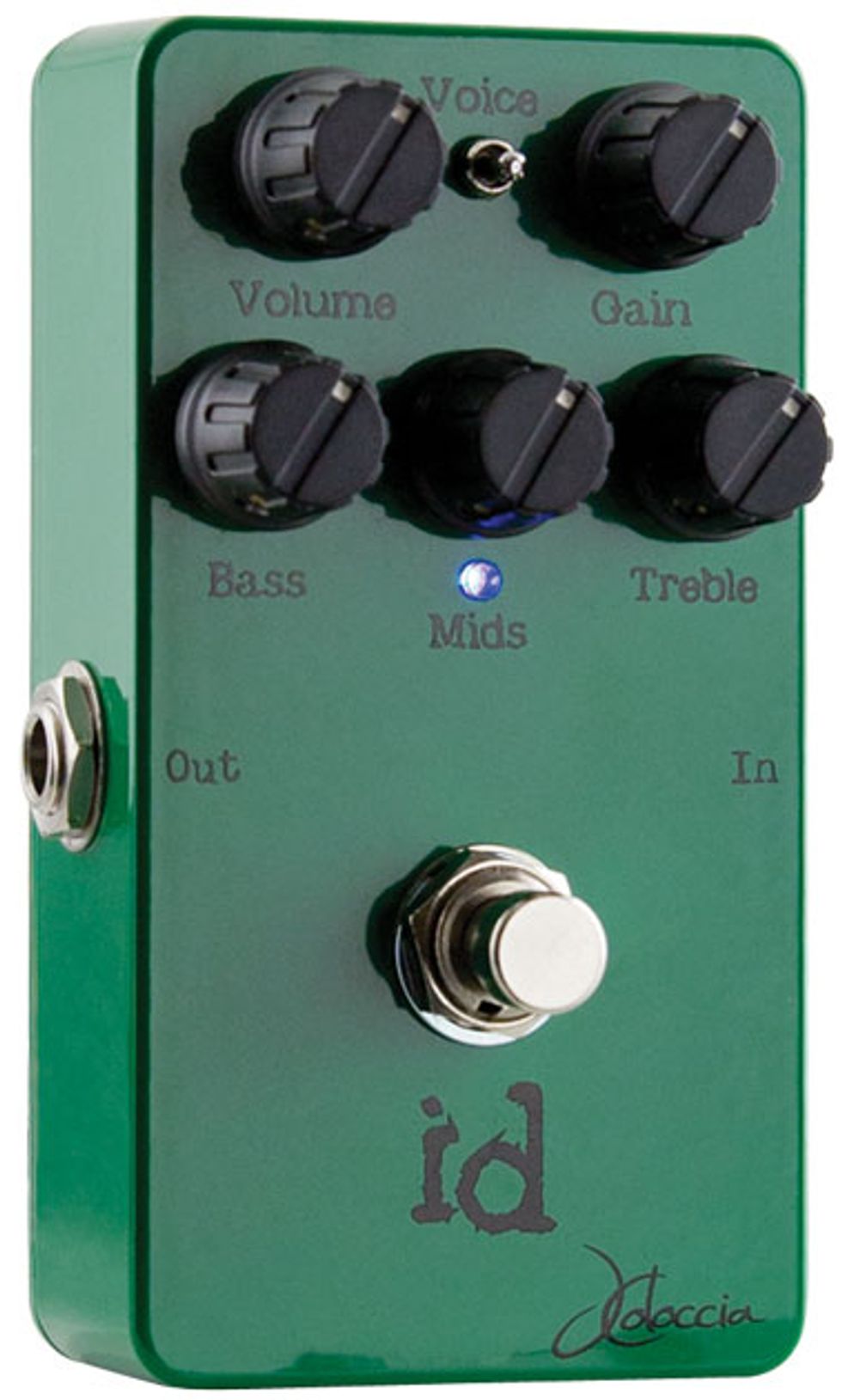
JColoccia ID
When you set the controls on the JColoccia ID overdrive at neutral positions, it’s a sonic dead ringer for a vintage Tube Screamer. But unlike most 808 clones, the ID delivers a genuinely useful, expanded EQ section that lets you dial in more air, more punch, and more radical tones than you’ll get out of any 3-knob Tube Screamer. This sonically flexible pedal offers a satisfying way to dirty up your world.
$169 street, jcolocciaguitars.com
Click here to read the full review
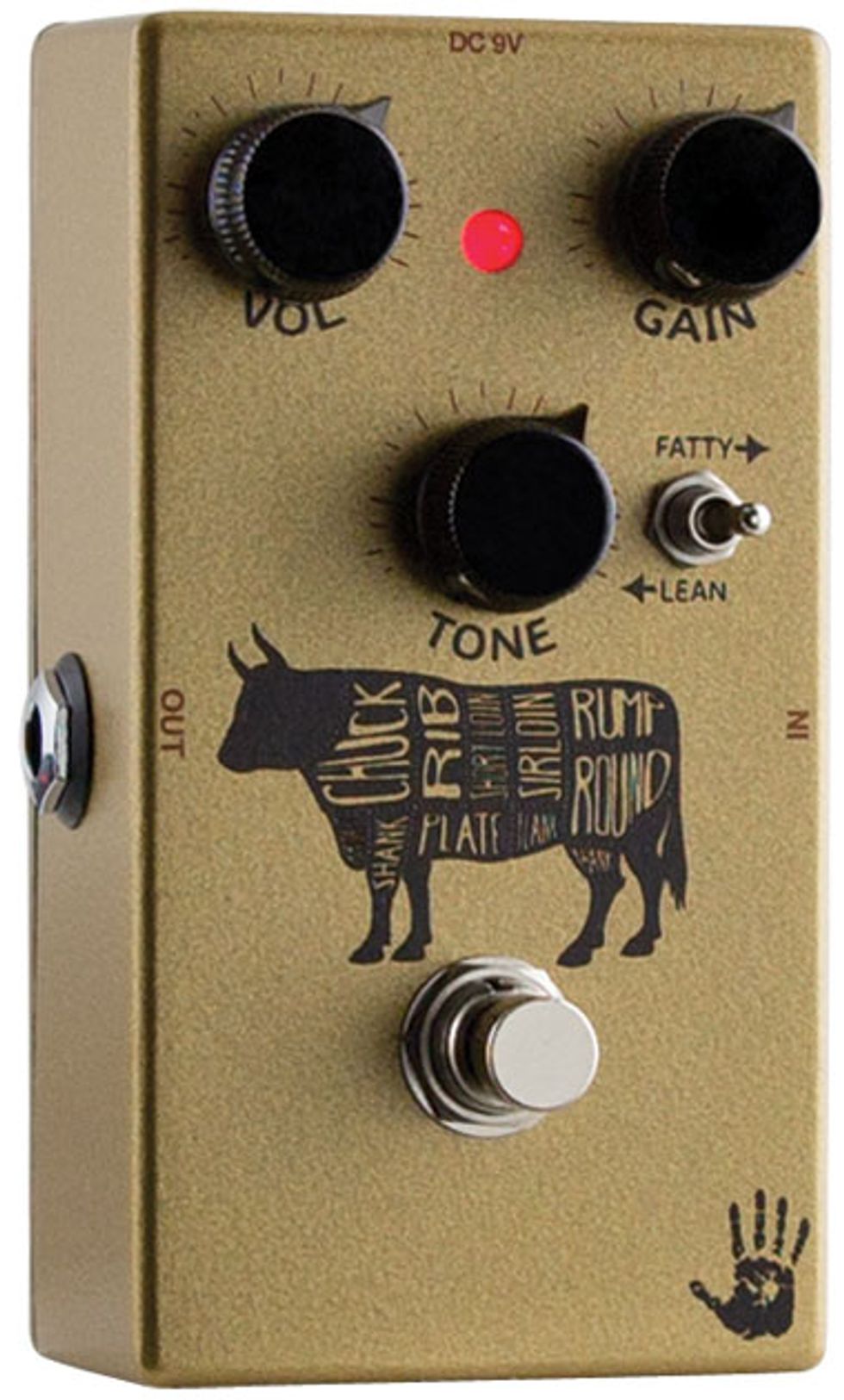
Mojo Hand FX Sacred Cow
Mojo Hand Sacred Cow is one of the best Klon-inspired pedals we’ve seen in recent years, and it’s more than a slavish copy of this well-codified sonic template. The Sacred Cow’s most obvious enhancement is its lean/fatty switch. Lean settings are “normal,” while fatty settings lend low-end heft that gives flexibility to players who switch between single-coils and humbuckers. For Klon tones at an accessible price, the Sacred Cow is tough to top.
$179 street, mojohandfx.com
Click here to read the full review
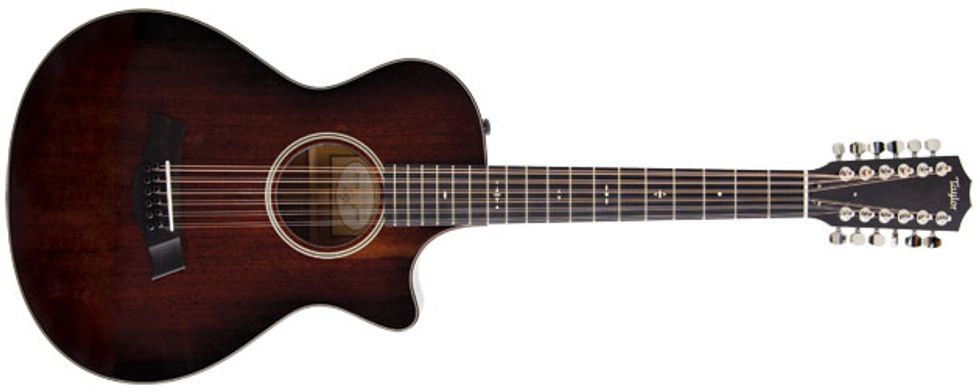
Taylor 562ce 12-Fret 12-String
The 562ce gushes gloriously rich tones and plays like a dream. Its mahogany Grand Concert body has an elegant Venetian cutaway that affords easy access to all 18 frets, despite the 12th-fret body joint. With its flawless workmanship and factory setup, low and fast action, hyper-accurate intonation, unreal sustain, and Expression System 2 electronics, the 562ce is an instrument of refined delicacy that makes fingerstyle playing an utter delight.
$2,699 street, taylorguitars.com
Click here to read the full review
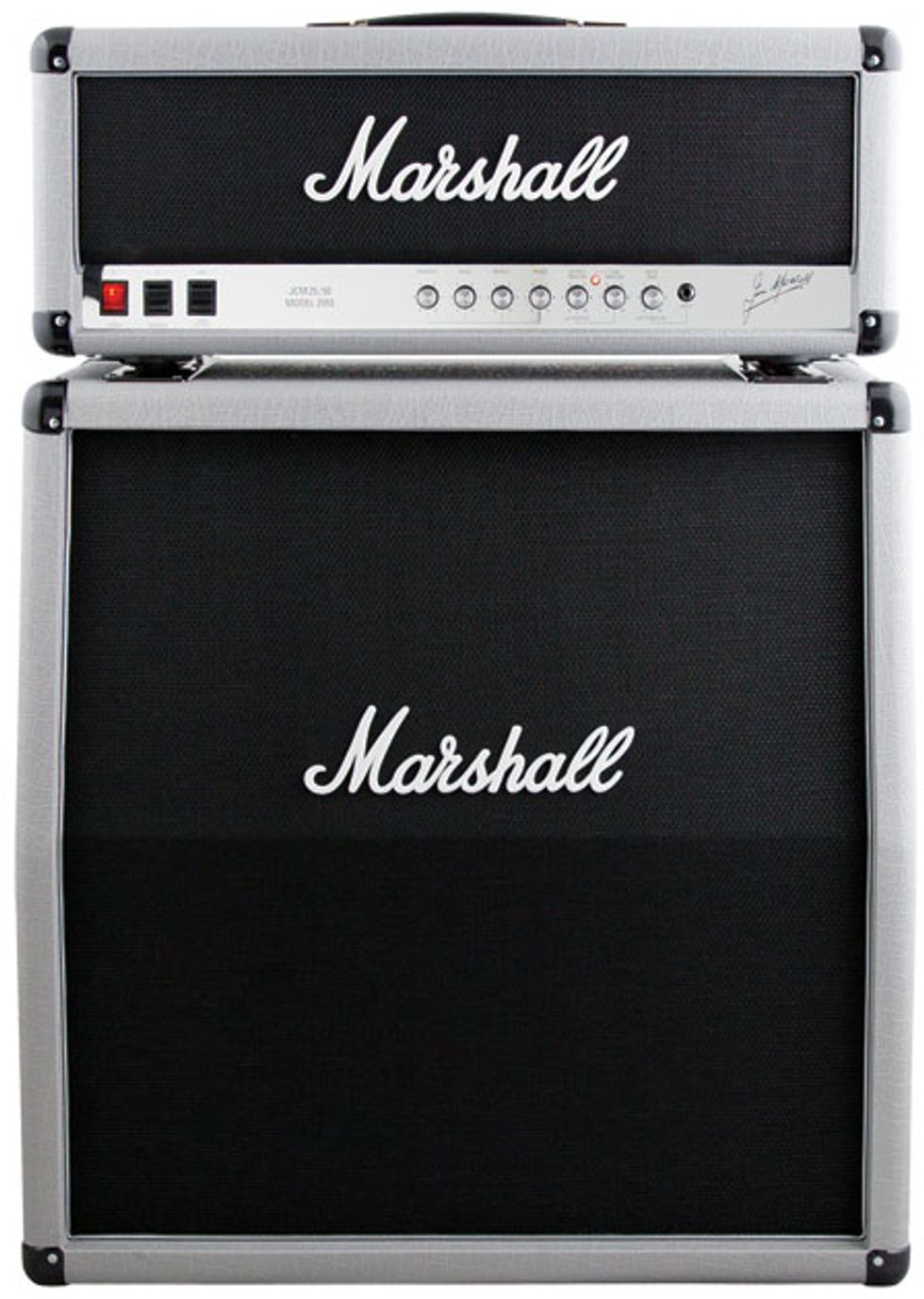
Marshall JCM 25/50 2555X Silver Jubilee
Produced only in 1987, original Marshall Silver Jubilee amps now fetch ridiculous sums. Marshall has heeded the clamor with the new JCM 25/50 2555X Silver Jubilee. While the 2555X boasts several design changes, in most critical ways it’s a faithful recreation of the original. Powered by four EL34s, the amp delivers 100 watts in triode mode and 50 watts in pentode. It boasts responsive EQ controls, heavenly clean tones, and a hot-rodded JCM800 vibe.
$1,899 street (head); $1,299 street (cabinet), marshallamps.com
Click here to read the full review
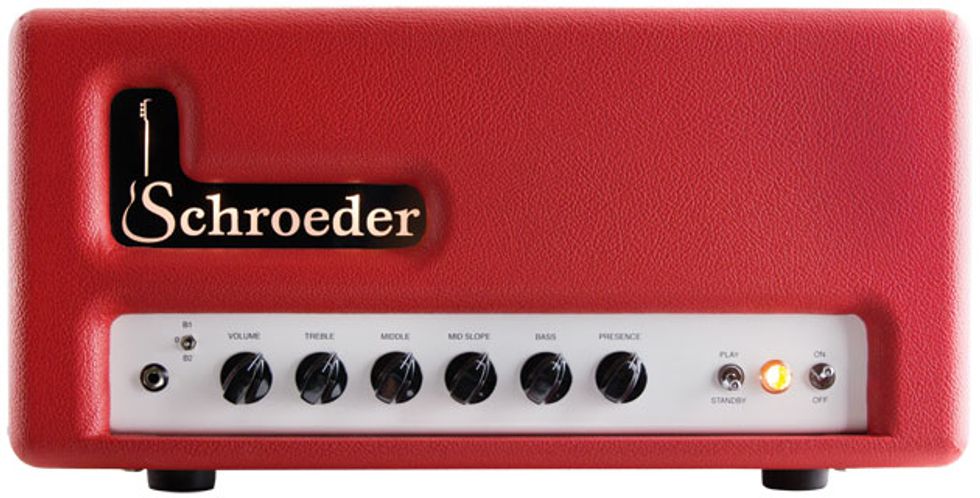
Schroeder SA9+
While some may argue the potential effect of say, a single capacitor in an amp or pedal, the SA9+ reveals how good the sum of many great components and an inspired, well-executed build can sound. Powered by twin KT66s, the amp’s superior headroom means very sweet clean tones, but the 40-watt head also makes a very responsive blank slate for pedals ranging from modulation to the most aggressive fuzz.
$3,950, schroederamplification.com
Click here to read the full review
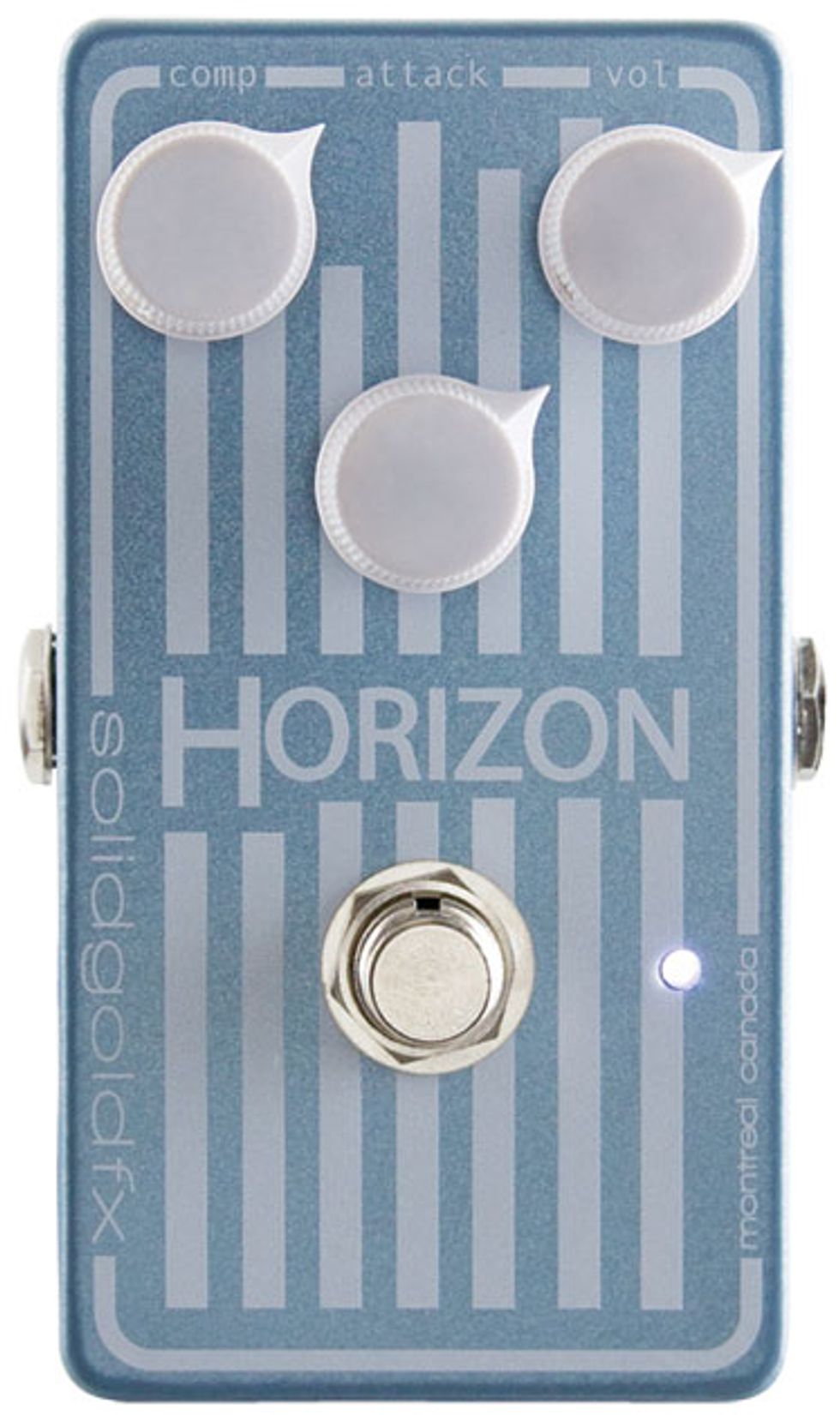
SolidGold FX Horizon
The beauty of the Horizon optical compressor? How it goes beyond basic compression. Yes, it can handle the most pedestrian compression tasks if you keep those attack and comp settings at the lowest levels. But the real treat is the swelling, super-squished, and downright psychedelic approximations of tape manipulation and studio-chain compression you can get via three knobs.
$175, solidgoldfx.com
Click here to read the full review
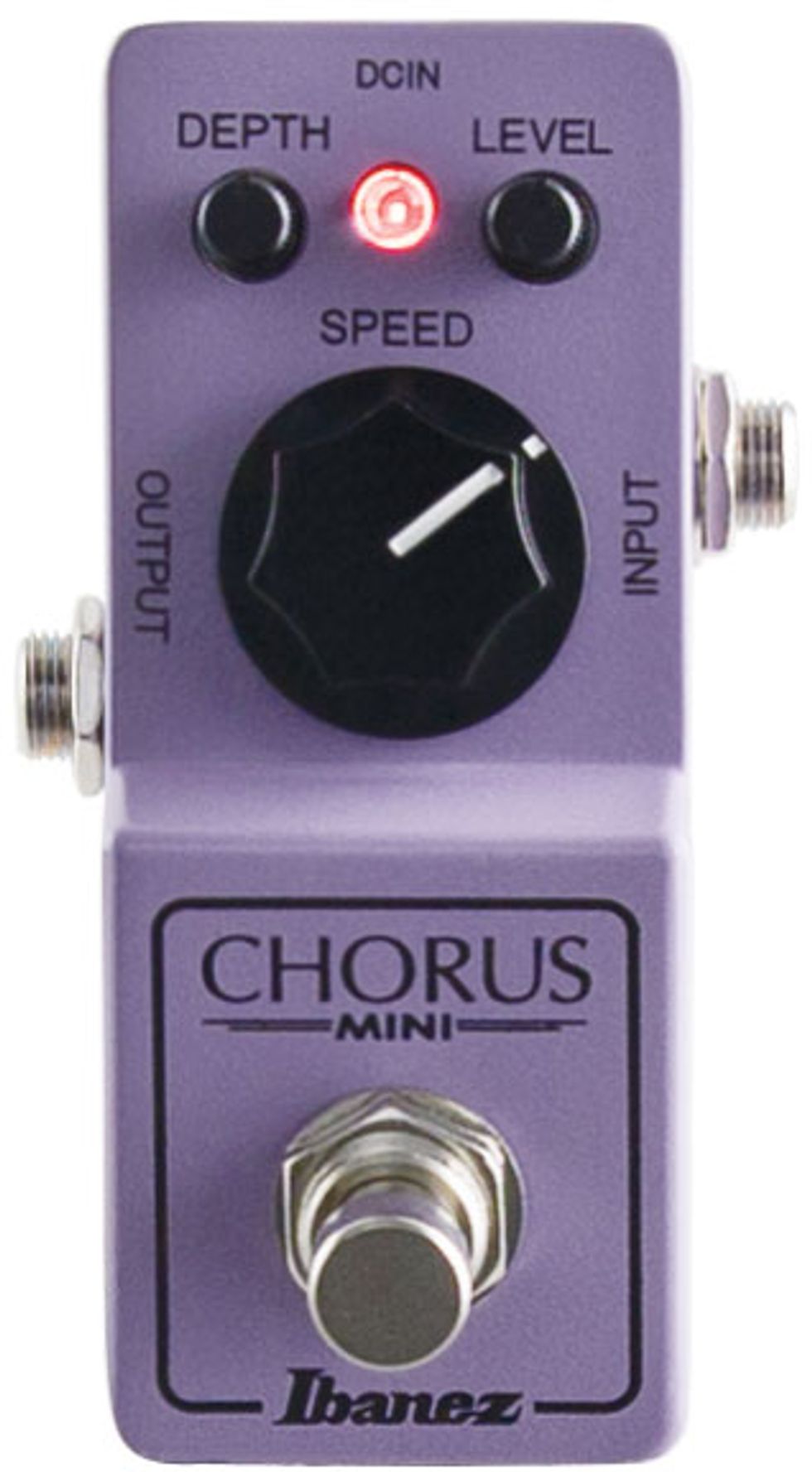
Ibanez Analog Chorus Mini
Ibanez’s Mini series has produced hit after hit so far, and with its warm, liquid modulations, the Analog Chorus Mini reveals how adept Ibanez designers have become at stuffing their best analog effects into petite packages. At 99 bucks, and with a footprint not much bigger than a Matchbox car, it’s one of this year’s price-to-performance ratio champions!
$99, ibanez.com
Click here to read the full review
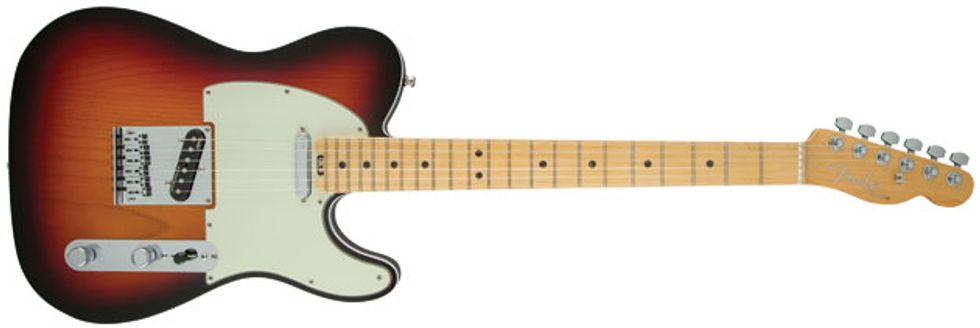
Fender American Elite Telecaster
The Telecaster is nearing 70 years old. But it’s a long, long way from retirement. In fact, the American Elite Telecaster reveals not just how freaking perfect the Telecaster is as a guitar design, but how much wiggle room there still is for tweaking. Fast, comfortable, and overflowing with sustain, the American Elite is a bold proclamation of how the granddaddy of solidbody electrics remains alive and vital.
$1,799 street, fender.com
Click here to read the full review
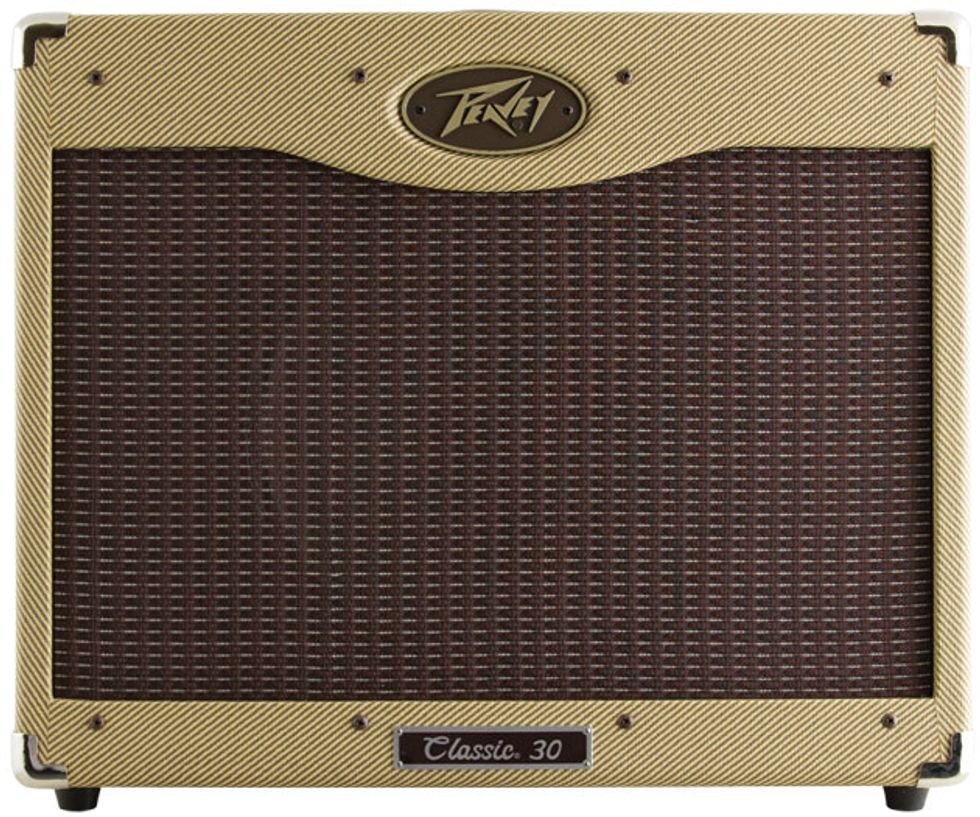
Peavey Classic 30
The latest addition to Peavey’s Classic series, this all-tube 30-watt 1x12 combo has enough versatility to handle virtually any playing situation. With two foot-switchable channels and four EL84s, the Classic 30 covers a wide sonic territory, and its shared 3-knob EQ and spring reverb make it easy to dial in everything from sparkling surf to roadhouse rock. An effects loop and switchable boost are welcome additions to this affordable, rugged stage amp.
$699 street, peavey.com
Click here to read the full review
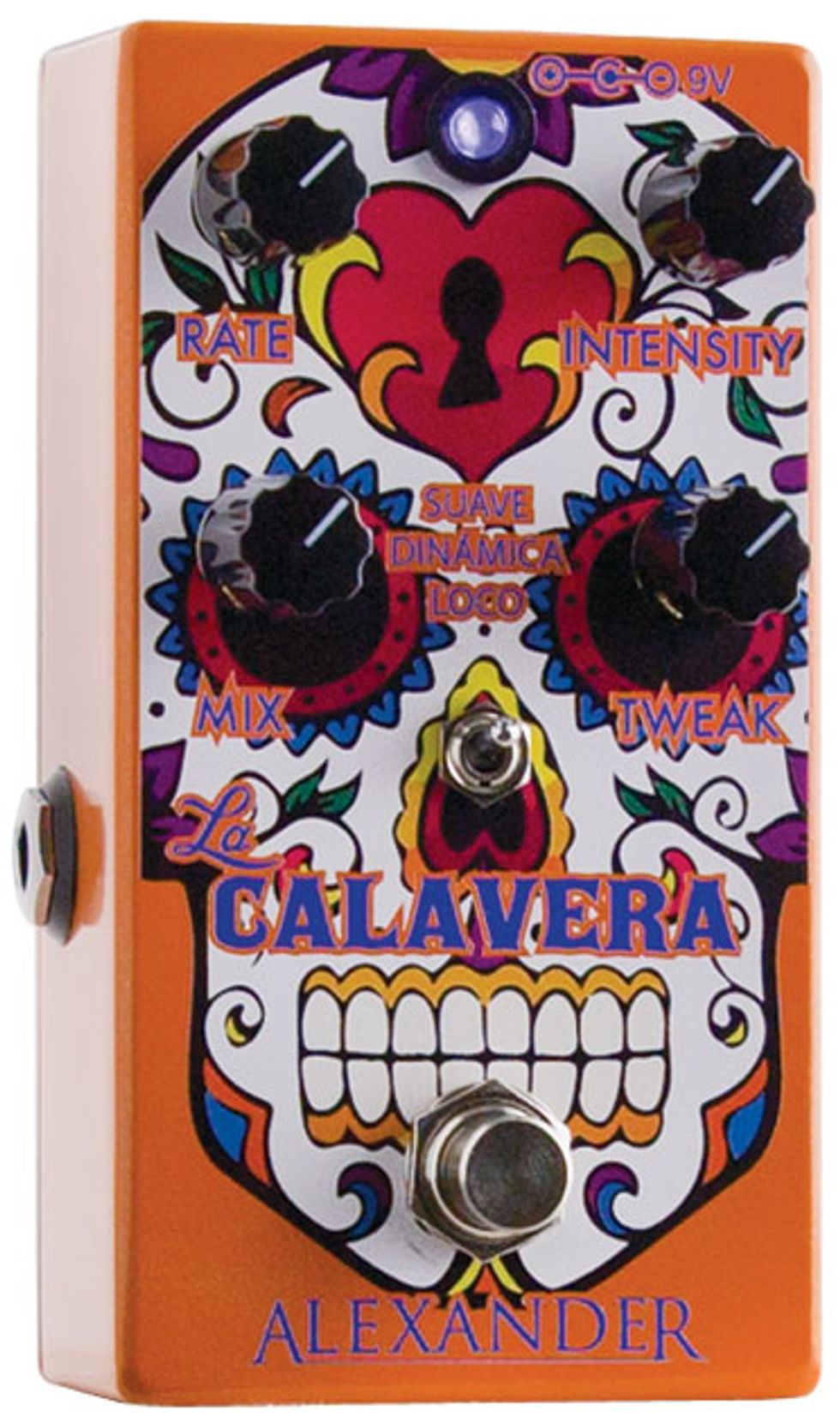
Alexander La Calavera Phaser
Though it’s digital, La Calavera sounds and operates like a great analog phaser. It’s no more difficult to use than a vintage Boss phaser, but its tonal range is far greater. La Calavera strikes a savvy compromise between power and simplicity, and all the controls offer deliciously musical ranges and tapers, which makes it incredibly easy to create compelling sounds in the pedal’s three operating modes. And hey, it looks rad too.
$189 street, alexanderpedals.com
Click here to read the full review
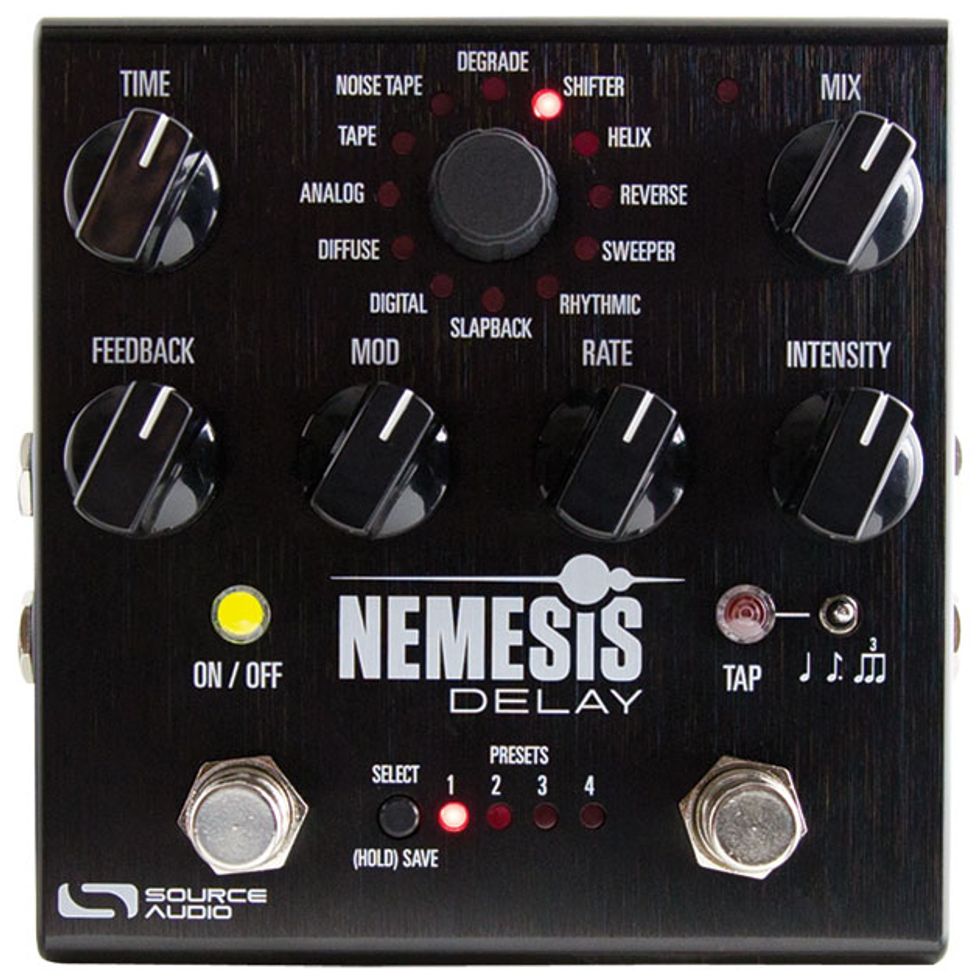
Source Audio Nemesis Delay
With seven knobs, two switches, two push buttons, two footswitches, and a raft of I/Os, the Nemesis digital delay may look imposing, but dialing in personal variations on classic and newfangled echo sounds is actually intuitive and fun. Nemesis can dish authentic slapback or perform precise sound-sculpting functions, and it’s a joy to explore the musical possibilities between those extremes. An easy-to-use editor app makes this powerful standalone delay even more versatile.
$299 street, sourceaudio.net
Click here to read the full review
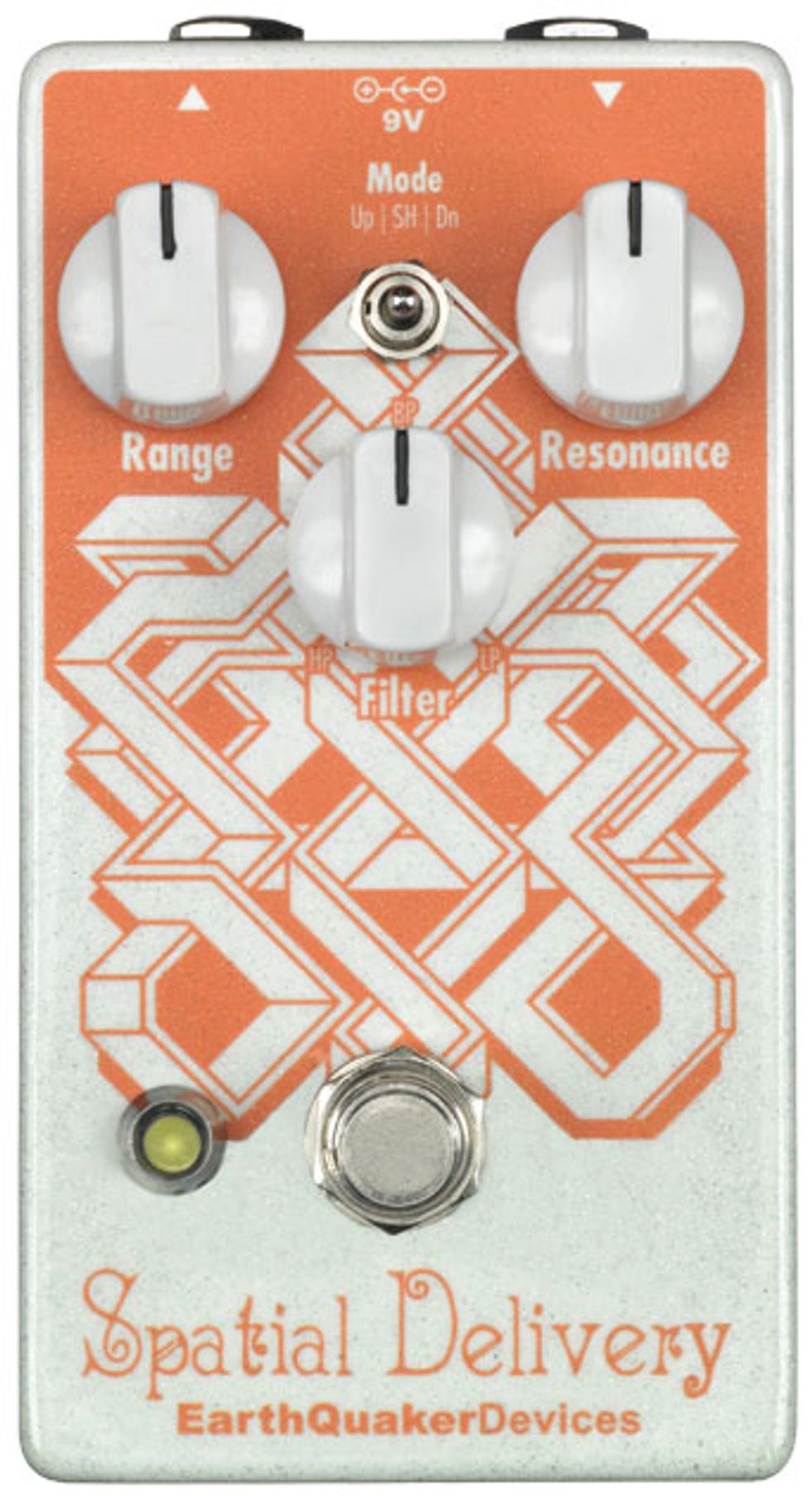
EarthQuaker Devices Spatial Delivery
Don’t let Spatial Delivery’s simple layout fool you—this envelope filter is capable of countless cool tones. Thanks to a clever multi-mode filter, you can create new sounds in a fraction of the time required by more complex filter effects, and it’s easy to dial in just the right response to suit your touch. The versatile controls are beautifully calibrated, the sound quality is superb, and the price is right for a handmade pedal.
$195 street, earthquakerdevices.com
Click here to read the full review
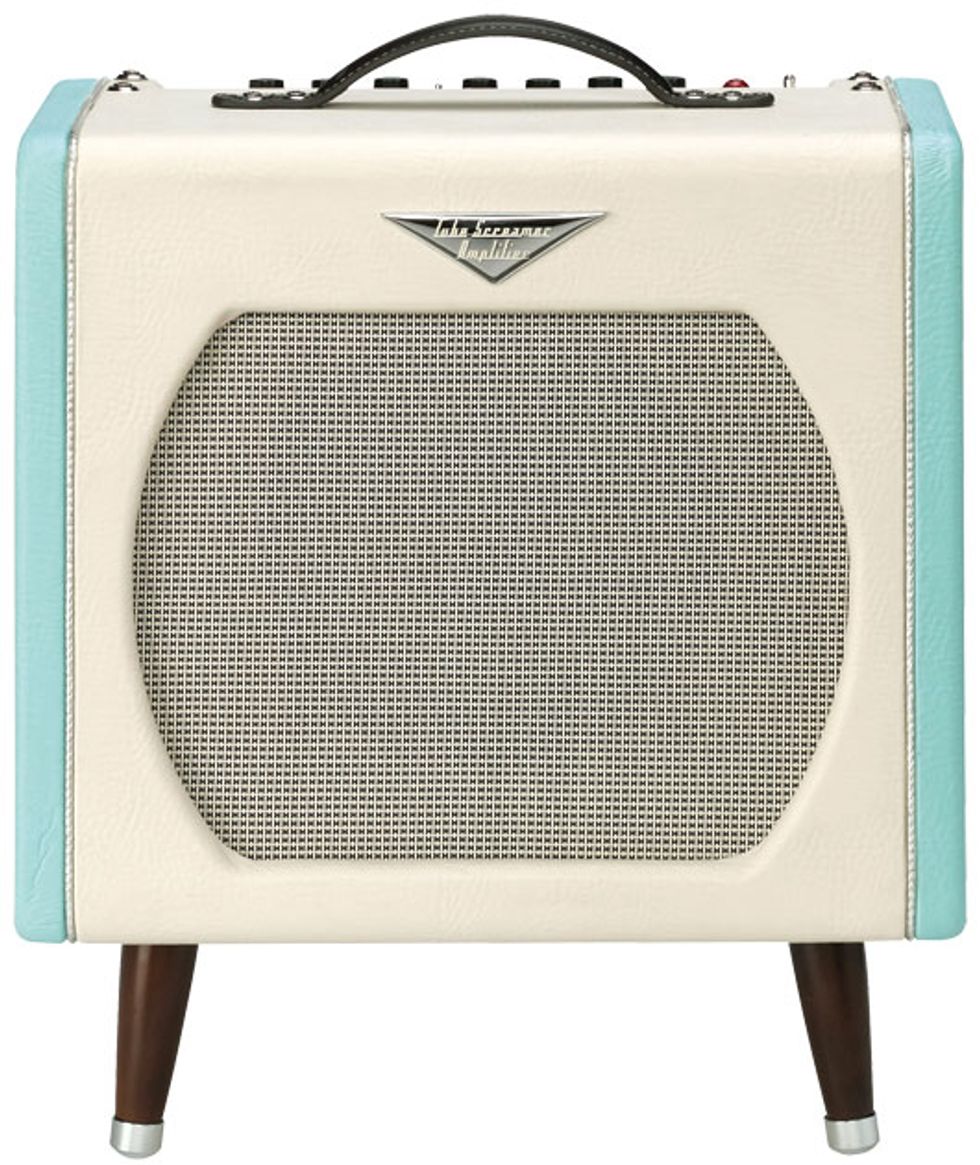
Ibanez TSA5TVR Tube Screamer Amp
The 6V6-driven Ibanez TSA5TVR Tube Screamer amp—which, as you might have guessed, has an onboard Tube Screamer circuit—is a 5-watt, 1x8 combo that excels at blues-rock leads, grinding power chords, ’60s garage fuzz, and Led Zeppelin-style leads. And how about that two-tone vinyl that looks lifted from a ’57 DeSoto Fireflite? Throw in a subtle but lush Accutronics spring reverb and you have the perfect amp for recording or playing intimate club gigs.
$399 street, ibanez.com
Click here to read the full review
Come with us time travelers, as we revisit a year’s worth of axes, amps, stomps, basses, baritones, and other tools of our music-making trade—all deemed worthy of the Premier Gear Award. This year’s list is as diverse as ever: Classics revisited, shred machines made affordable, fuzzes refined and made more fiendish, amps that blast and purr, basses that boom, and time-warping delays and reverbs that mock astronomers’ notions about the cosmos. From manufacturers big and small, these delights await you in the pages ahead. Enjoy the voyage.


